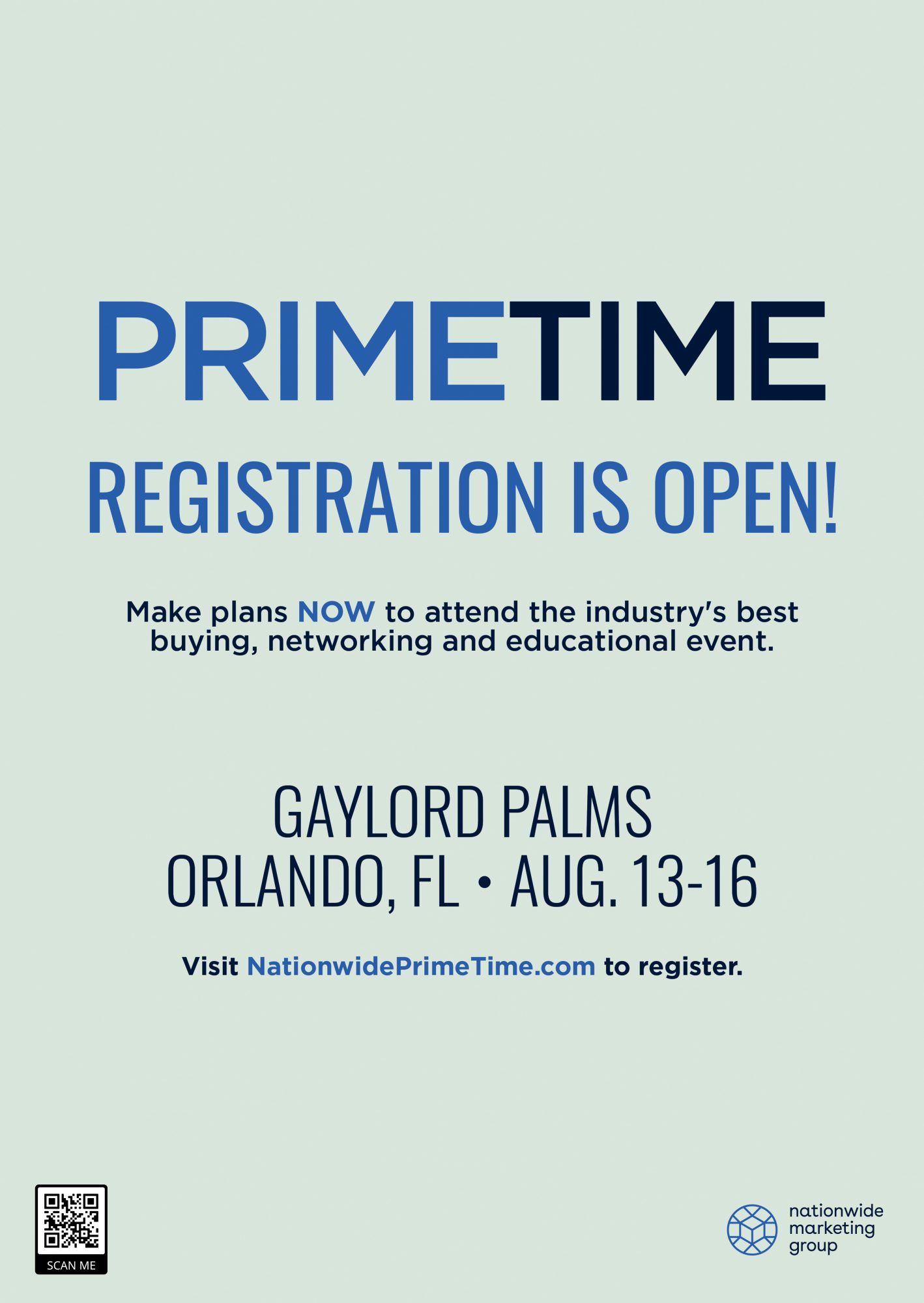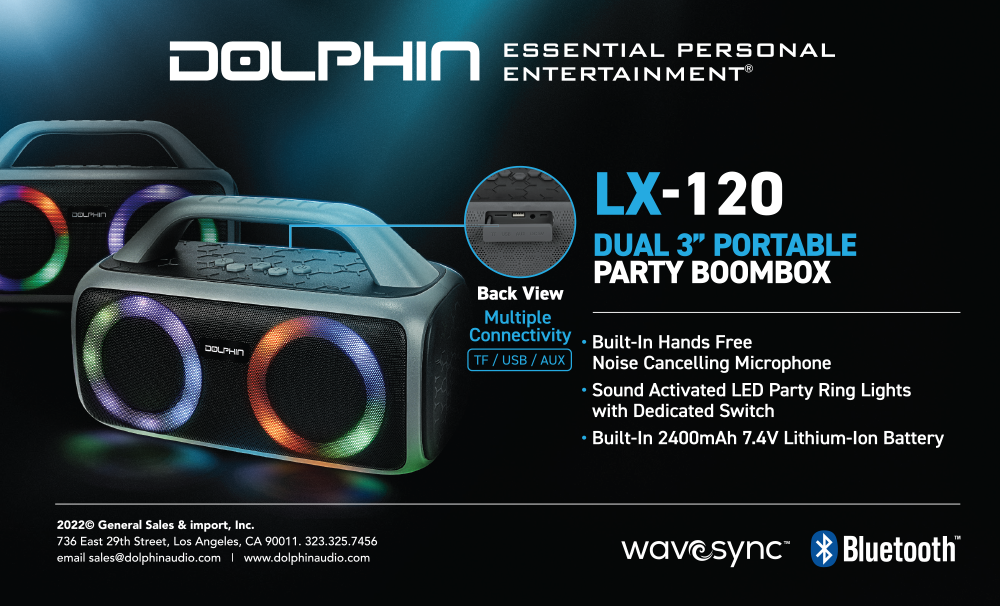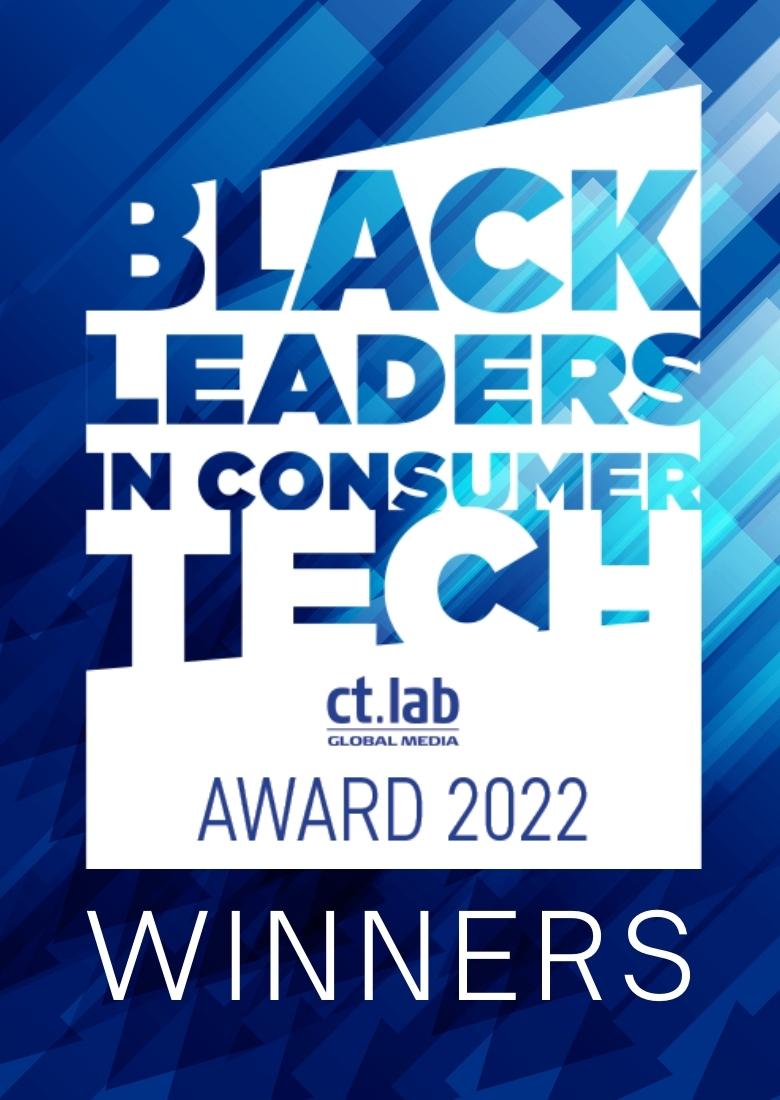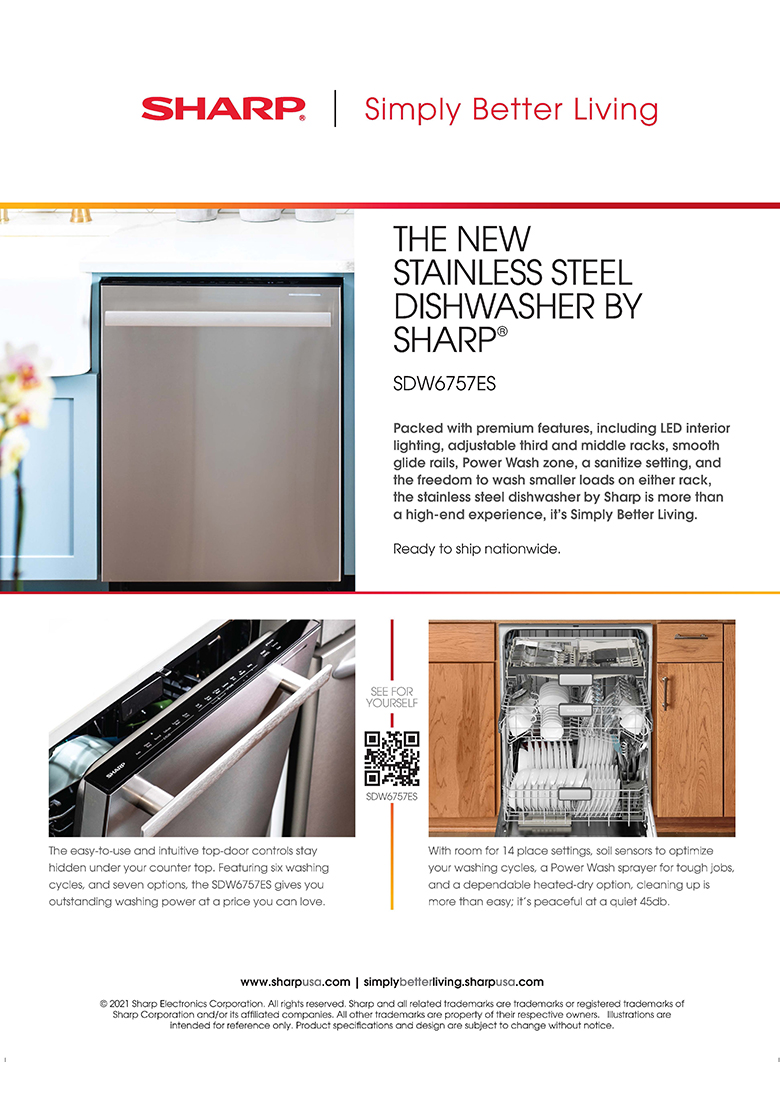The winter holidays might be months away, but now is the time to start planning for the onslaught of consumer shopping. Also in this issue, find out the best accessories for smartphones and the top smartwatches and fitness trackers this year, plus more on how to capitalize on the wearable turnover.

Looking Cool
During Christmas in July!
I am sure you will not find this hard to believe, but I am a huge Golden Girls fan. So, when the Hallmark Channel introduces its “Christmas in July” movies, disrupting their schedule, I get cranky. I cannot believe we are already covering the holiday and its related trends for the end of the year. But I know how important this is to our business, and how appropriate and timely it is for the topic to be addressed in full in the July issue.
But now, let’s circle back to talking about summer. In this issue, we look at the newest and coolest smartphone accessories that every consumer will want. In addition to showing the many ways to make a phone look hip, we look at the new fitness trackers and smart watches that will work seamlessly with your new, trendy phone. These accessories are sure to make your customers look great on and off their phones.
As retailers and distributors, you’ll also want to make sure you’re reaching them with full effect on social media. So we have a great social media feature on Instagram Reels versus TikTok and how best to communicate with them. I am 58, and I love TikTok… there, I said it.
Since it is summer, travel tech is big. When I am at the airport, I am always browsing the stores to see what’s latest and greatest. What should our consumers buy to make their trip even better? Our editors have it covered. Of course, buyers need to have hearables and wearables covered, should something happen, so we look at this very great trade-in program that you can offer them that will make them smile.
And, for when our customers come home eventually, there’s our feature describing great “Tech Enabling New Apartment Experiences” and the latest in outdoor sound.
Lastly, I would like to touch on an annual program we have featured these last two years: the CT Lab Global Media “Black Leaders in Consumer Technology.” It is near and dear to my heart. When you go to an industry event, please take notice of the diversity of the room; it is surprising. Diversity in our workplace is important for our future. Growing up in the Bronx in an Italian community, I went to the Boys Clubs of NYC and faced bullying for it. However, so many of those who have influenced me in a positive way are people of many backgrounds, and I am fortunate to have been open to listen to them.
I want to thank Allstate, Nationwide Marketing Group, OnPoint Warranty Solutions, Premium Audio, Promounts, Savant Systems, Sharp Electronics, Sony Electronics, and Sound United for supporting this initiative. I look forward to seeing this list of supporters continue to grow.
As always, any comments and/or questions, please contact me at tmonteleone@ctlab.media – our great team would love to hear from you!
Tony Monteleone,
Group Publisher of CT Lab Global Media
A WORD FROM OUR EDITOR IN CHIEF
Tech That Gets Us Out the Door

Let me introduce myself with an honest note. If you’ve seen me around — on a trade show floor, in a press conference, racing around Atlanta with a toddler in tow — you know that I tend to move in a well-caffeinated rush. That’s where consumer electronics comes in, for better or worse. While all of the above outline my life as a busy workaholic — something I am working on, by the way — they also show what the magic of technology allows me to do.
Consider the smart watch. According to a recent report from Statista, smartwatches are one of the most popular wearables categories globally and are expected to generate a revenue of 53.6 billion dollars by 2025. Consumers like me love being connected on the go, without even having to take their phone out. Again, for better or worse, we love having access anywhere, anytime. In our feature on smart watches and fitness trackers, you’ll see just how many varieties of these accessories exist and how their features can draw in a consumer.
Consumers are also attracted to wearables because of their ability to supply essential health information. Several of today’s watches boast abilities like the detection of atrial fibrillations, tracking blood oxygen levels, heart rate and breathing rate. Smartwatches give active consumers integral feedback on resting heart rate, VO2 and even training status; runners like me appreciate the gentle nudge when I’m exercising too much or too little.
Apple is the leader here, with more than a 50 percent share of the market. However, Google is now in the running after the acquisition of Fitbit. My vote is for Garmin, which offers less apps but more sports-related tech like elevation, detailed heart rate monitoring and training status. My Garmin fēnix 5 smartwatch, while a few years old, is my companion on long bike rides and road races. Because of the accuracy of the heart rate monitor, it was unknowingly even able to tell me I was pregnant with my son before a test could. (Resting heart rate says a lot about your health.)
Then there are all the other cool gadgets making it easier for consumers to go and do more. In this issue, you’ll see smartphone accessories for the adventurous, including incredibly fast mobile chargers, waterproof, sustainable protective cases and even a connected headband that monitors and reacts to brainwaves. Consumers are on the road again, which means they will be drawn to all of the fun and helpful travel technology out there, like luggage trackers and noise-canceling headphones.
As you plan for the holiday season, consider how your customers are taking advantage of finally getting out the door again. Whether that’s through improving their health or finally taking that long-delayed trip, technology will be on their wrists, in their hands and on their packing list.

Erinn Loucks
Editor in Chief

CE RETAIL TECHNOLOGY
July 2022 CE News

Apple Adds BNPL Feature | Apple has announced that it’s diving into the buy-now-pay-later economy with an update to Apple Pay called Apple Pay Later, which allows customers to make purchases in four installments without interest. Apple Pay Later, which is powered by Mastercard, will be available through every platform that accepts Apple Pay. As a result, this feature will require no new integration from merchants who are already using Apple services.
What Shanghai Reopening Could Mean for the Supply Chain Backlog | Shanghai, the largest city in China, has announced that it will begin to slowly allow businesses and transportation services to reopen after two months of strict lockdown due to the COVID-19 pandemic. In the last year, the price of shipping a container from China to the West Coast has nearly doubled and analysts from Resilinc predict that the backlog caused by these latest shutdowns will last through the end of 2022.


Walmart Expands Partnership with Robotics Firm Symbotic | Automated distribution centers may seem like something out of a science fiction novel, but in reality, this technology may become mainstream much sooner than you think. In May, Walmart announced that it’s expanding its partnership with warehouse robotics firm Symbotic to feature automation technology across all 42 of the company’s regional distribution centers. The retrofitting of Walmart’s distribution centers with Symbotic technologies is expected to take roughly eight years to be fully implemented.
Retail Sales Decline for the First Time This Year | According to data released by the Commerce Department, retail spending on all goods excluding gas declined by .3 percentage points between April and May. Electronics and appliance sales, which are seen by many consumers as being non-essential purchases, have been hit harder than the overall market, dropping by 1.3 percent.


Supply Chain Issues Batter Consumer Confidence in Businesses | A study of more than 96,211 U.S. consumers’ perceptions of 221 companies and federal agencies conducted by Forrester Research found that the average customer experience score declined on a year-over-year basis from 72.0 to 71.3. The decline in customer satisfaction bucks a trend of steady growth over the last few years. Moreover, the study found that an unsettling 19 percent of brands experienced a decrease in their customer experience score.
Amazon Subcontracted Delivery Service Employees Injured at Alarming Rate | A report from the Strategic Organizing Center (SOC) estimates that 18.3 percent of the company’s subcontracted delivery service suffered an injury while working compared to only 8.5 percent of those directly employed by Amazon. This discrepancy in injury rates may be due to the rapid speeds at which subcontracted delivery services are expected to work. SOC cited lawsuits from DSP companies that allege Amazon expects them to deliver a package every one to two minutes for ten hours a day.
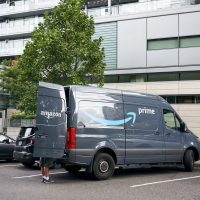
SMART HOME
Tech Enabling New Apartment Experiences
Consumers are looking for lighting control,
security systems and more
By Kristen Hanich Research Director, Connectivity, Parks Associates
Technology is ubiquitous and impacting all environments, especially buildings. One unique market for smart spaces solutions is that of smart apartments and MDUs. Smart apartments feature smart amenities for residents, community management solutions and building automation solutions. These solutions are growing in popularity among MDU property managers and owners in the U.S. and Europe. In Europe, this is noted by investments in property management software, such as Plentific, which raised $100M in funding from Brookfield Asset Management, Highland Europe and Target Global, among others. Also, recently a property technology (proptech) firm based in London, Lavanda, was funded $7.25M.
Internationally recognized market research firm, Parks Associates, reveals that 57 percent of MDU managers report having a lighting control system in their largest property; 26 percent have an energy management/monitoring system, and 13 percent have a smart home device or IoT platform/hub. Additionally, 44 percent of properties with energy management systems incorporate internet-connected devices such as smart thermostats and smart lighting into the system for remote monitoring and control.
The use cases and deployments targeting the smart apartment space have many similarities to solutions targeting the hospitality space. However, there are unique factors in the MDU market that introduce additional complexities and challenges.
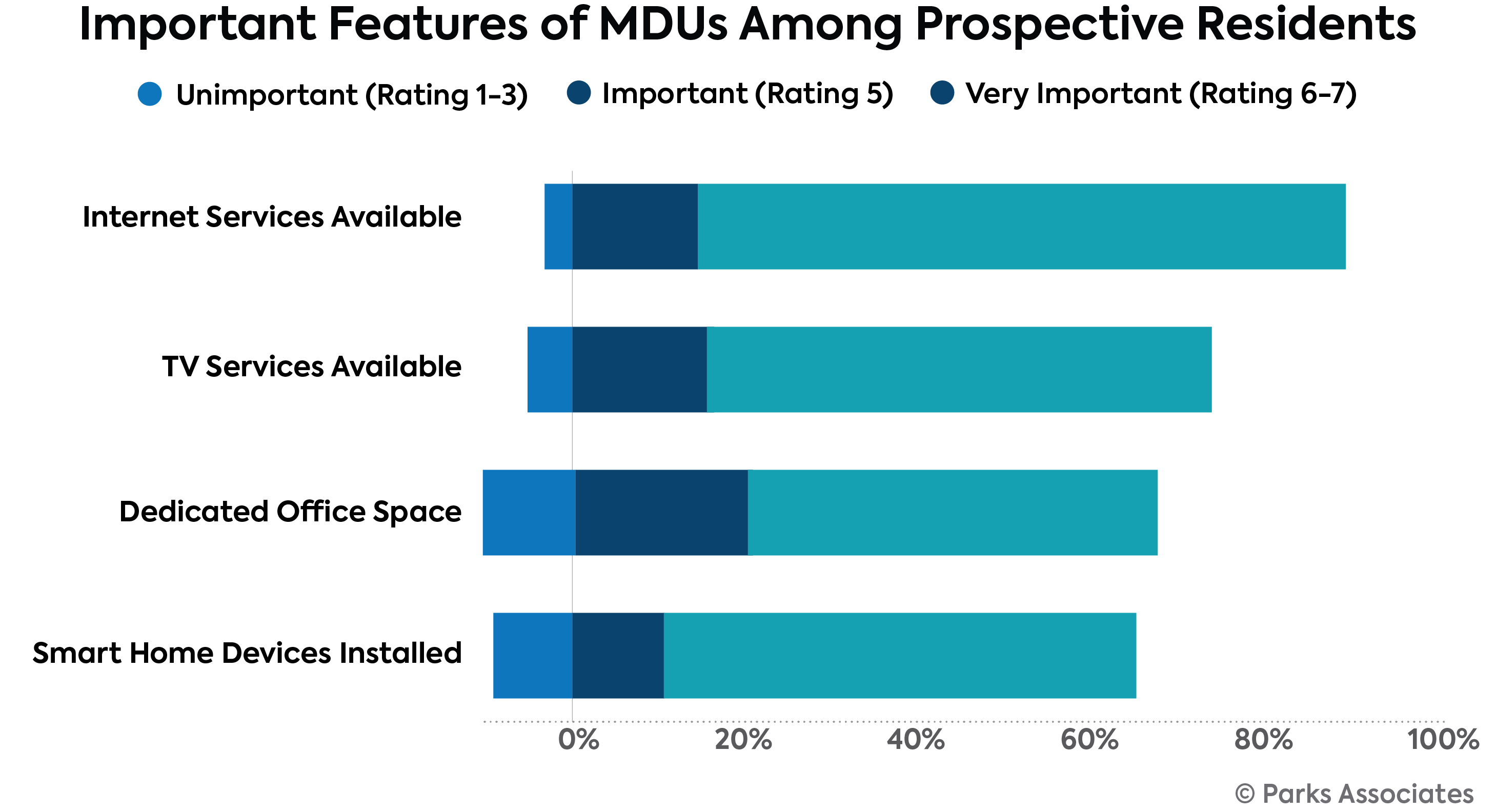
Dual Perspectives: Residents and Property Managers
Many smart home solution vendors perceive MDUs as a potentially lucrative channel for new business, while traditional MDU technology vendors are making investments to rapidly expand their service offerings, including through acquisitions and IPOs. This market does have unique challenges: in smart apartments, unlike in other verticals, solutions providers are serving two different clients—the property manager and the residents. The wants and needs of these groups may differ, as do the solutions that best serve them.
Property managers and owners who have installed smart home solutions report significant benefits from these solutions. The top benefits include increased rental revenues, improvements in operating efficiencies, and an increased ability to attract and retain residents. The research firm reports that more than a third of MDU residents are willing to pay an additional 15 percent per month in rent for smart amenities. At present, MDU owners and managers are less likely to note lower property insurance costs as a benefit, but this will likely increase as the market develops and matures. According to The Wall Street Journal, insurance premiums for apartment communities in the U.S. rose by 33 percent in 2020 alone. Smart home platform providers can partner with more insurance companies to offer lower insurance premiums to property managers on the basis of the lower safety risks associated with smart home device implementation. This too will drive higher return on smart home device investments for property managers and drive higher adoption rates for device and platform vendors.
The Importance of Reliable, High-Speed Broadband
While the majority of MDU residents acquire broadband service for their units directly through providers via a retail service model, a growing number of properties offer managed high-speed internet access (HSIA) as an amenity. However, given recent FCC rulings on resident choice in MDU environments, MDUs are no longer able to enter into exclusive or graduated revenue-sharing agreements with ISPs and are no longer able to participate in sale-and-leaseback agreements. Vendors working to deploy IoT solutions into MDUs must be prepared to support a mix of deployment models, including multiple internet-service providers or even tenant-owned devices. MDU residents making use of property-provided devices are keenly interested in use cases related to safety and security, as well as energy management. Parks Associates finds that 43 percent of U.S. MDU residents report using smart home devices, including a mix of property-provided devices, and devices the resident purchased at retail. Consumers prefer to monitor and control their devices through a single user interface, and top solutions will support a BYOD approach.
As data security and privacy continue to be an important concern for smart home users, both apps and voice controls pose different pros and cons of use. Manufacturers desiring higher adoption are well-advised to focus on privacy-focused policies, capabilities and product design, particularly for camera-equipped devices. Further, 60 percent of property managers report that they can monitor the data from smart home devices installed in individual units, and 38 percent also report that they can adjust any device at any time. Platform vendors providing smart home devices typically restrict these capabilities for property management companies in order to prevent invasion of resident privacy and rights.
MDU residents are more likely than consumers living in single-family homes to own smart home products, with residential owners of units in condominiums or townhomes particularly likely to use smart home technologies. More than 42 percent of MDU unit owners report that their property pre-installed at least one smart home device. However most renters, by contrast, have fewer BYOD and self-install options. MDU residents looking for a more complete smart home experience must select a unit with devices pre-installed, but just over 10 percent of renters living in MDUs report that they are currently living in a unit with a pre-installed, property-provided smart home device.
MDU residents report that pre-installation of smart home devices is an important factor when selecting their new apartment. More than half of MDU renters are willing to pay extra for an apartment with smart capabilities and amenities, which would also include a system that allows them to add their own devices without limitations or needing approval. Given the tech-positive tendencies of MDU households, there is considerable room for smart spaces solutions to grow in the MDU rental market.
KEY TAKEAWAYS:
- A lighting control system is the most popular connected home tech in MDUs.
- Pre-installation of smart home devices is an important factor when selecting a new apartment for most consumers.
- A third of MDU residents are willing to pay an additional 15 percent per month in rent for smart amenities.
This is an excerpt of Parks Associates’ whitepaper Simplifying the IoT Edge: Smart Spaces Best Practices, in collaboration with Technicolor. Download this complimentary whitepaper to learn more about the demand and growth of IoT edge solutions in smart buildings and smart spaces, or please visit www.ParksAssociates.com.

CYBERSECURITY
Getting a Grip on Cybersecurity:
Lessons From BitTrap CTO Ariel Futoransky
Tips and trips for keeping
your business safe from malicious online actors
By Sam Hitt
Most retailers are well aware that hackers pose a threat to their computing systems; yet, conceptualizing the form that cybercrime will take can be overwhelming, to say the least. On average, intruders spend 10 months in a system before being discovered.
In many ways, the internet is the frontier of our modern generation. As a whole, it is a platform with very little in terms of regulation, making it the ideal setting for those looking to exploit vulnerabilities in the system. So, how can you protect yourself and your company from these unforeseen dangers?
To get a better understanding of the threat that cyber intruders pose and some of the strategies that cyber security firms use to combat them, I sat down with Ariel Futoransky, CTO of the cybersecurity company BitTrap, which has developed an innovative blockchain-based cybersecurity system.
Finding Vulnerabilities
The first step to protecting yourself is understanding what cyber intruders are after. The goal of hackers is to gain access to your network system to harvest valuable data on consumers that can be re-sold to interested parties on the black market. This information consists of credit card, bank account or social security numbers, and other personal data such as health forms or email accounts.
The most valuable information that businesses have to protect is that of their customers and losing consumer trust on account of cybercrime can be crippling. According to a Cisco study from 2020, 26 percent of consumers stopped doing business with a retailer out of fear for the privacy of their data.
Moreover, retailers are particularly vulnerable to intrusion given their broad surface area and multiple points of online interface. In regards to some of the challenges posed by cyber attacks on retailers, Futoransky said: “If the attackers are there for quite some time, it may be really difficult to analyze and understand what’s the actual scope of the attack and how much information was actually compromised.”
Prevention Strategies
Many cybersecurity companies employ front-end prevention systems such as firewalls to keep hackers from gaining access to a client’s data. These firewalls monitor and control incoming and outgoing network access based on predetermined security rules to establish a barrier separating trusted networks from untrusted ones.
BitTrap, on the other hand, utilizes more unconventional tactics to tempt hackers to expose themselves once they are in the system. This different point of attack operates off of the assumption that prevention tactics will still have holes that allow hackers to get into a client’s system undetected.
In regards to BitTrap’s prevention strategy, Futoransky said in an interview with Dealerscope: “It makes a lot of sense to invest in technology to try to block the attacker from gaining access but regardless, sometimes attackers can break in.” Therefore, the goal is to catch hackers as early as possible since the longer a hacker is in the system undetected, the more damage will be caused.
To do this, BitTrap places a series of monetary incentives at easy-to-reach points within the computer system to tempt hackers into taking the quick profit, instead of settling in for a longer and more thorough ransomware attacks that could take months to be detected. For those unfamiliar with cybersecurity terminology, a ransomware attack is when an intruder gains control over a series of devices and encrypts the files before forcing the user to pay money to regain access.
To catch intruders, BitTrap casts a wide net with these monetary incentives by placing them on “all of the endpoints, all of the workstations, and all of the notebooks from the employees of the company.” This creates an interconnected system of devices that is then monitored by BitTrap for intrusion. If one of the traps gets sprung, BitTrap will be able to rapidly get in contact with the company “to respond as quickly as possible by identifying and the isolating the device to conduct incident response tasks.”
Going Forward
In terms of how frequent cyber attacks are, Futoransky estimates that roughly three out of every 1,000 devices will deal with some type of intrusion every year. Cyber attacks may not be as tangible as an armed robbery, but they can be equally as destructive and costly for your business. Educating yourself and your employees about the different types of threats posed by the internet is essential for conducting business in today’s online environment. Moreover, retailers should have a strategy in place for protecting sensitive information and for responding to inevitable intrusions as rapidly as possible.
KEY TAKEAWAYS:

- Hackers are trying to mine valuable information on your company and consumer base to be resold on the black market.
- On average, hackers spend up to 10 months in a system before being discovered.
- Prevention strategies include front end firewalls to keep hackers from entering the system and traps to catch those who have already breached a network.

AUDIO
Finding the “Goldilocks” of Outdoor Audio
Not Too Precious, Not Too Puny – Just Right
By Randy Blanchard, Director of Audio Products, Vanco International
(Left) Polk Audio Atrium 4 Outdoor Speakers boast a powerful bass in all types of weather and includes broad sound coverage and a speed lock mounting system.
Audio is the bread and butter of the residential technology integration business. CEDIA’s recent Integrated Home Market Analysis shows audio systems as the single largest category by revenue, making up 17 percent of the more than $20 billion industry. The same report forecasts continued growth in outdoor AV; already a hot category, integrators estimate they’ll be doing 25 percent more outdoor jobs in 2022 than 2021.
It seems like the perfect marriage of expertise and opportunity – but not so fast. Indoor audio best practices don’t translate to the great outdoors, because the environment, use cases and goals are totally different. Weather and particulate resistance rating aside, solutions that are a great fit for a home theater, media room or dedicated listening area simply will not deliver a great experience outdoors. Conversely, the portable outdoor speakers that are marketed directly to consumers as an outdoor entertainment solution work very well – to entertain 2-5 people at a time. Achieving “just right” outdoor audio requires a new approach, borrowing from the best of both the commercial and residential technology worlds.
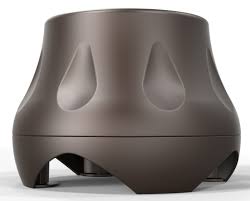
The OSD Forza 10-in. Outdoor Subwoofer is fully weather resistant and includes a 10-in. polypropylene cone woofer and a high impact molded plastic enclosure with an antique bronze finish.
Defining Our Goals
Most residential audio systems are aiming for suspension of disbelief or the sonic re-creation of the original live event. I’ve waxed poetic in this magazine’s sister publication, Connected Design, about how a great home theater audio system invites you into the world of a film – just like a great Hi-Fi system put you right in the studio. These immersive effects are achievable because they’re targeting a defined listener area. Outdoor audio isn’t that.
In outdoor entertainment, you can assume your listeners are moving around and exploring the space. Audio provides the backdrop against which the evening plays out; it’s a sauce, not the entrée. What you’re looking for is consistency throughout the listening area: a little taste of sauce in every bite. That’s a more common goal in commercial applications than residential. It’s what you’re looking for in a PA system or speech reinforcement for a lecture hall. Therefore, we can look to the ProAV world for standards and best practices here.
AVIXA’s Audio Coverage Uniformity standard provides a well-defined target. According to this standard, a truly uniform audio system will have undetectable variations in volume across the whole range of human hearing. The idea is that listeners never notice how far away they are from the nearest speaker, because they can hear equally well in any position. Even if you’ve got a stereo source, I recommend summing the inputs and sending a mono signal – it would sound the same wherever the listener roams.
The goal is impossible with a single source like a Bluetooth speaker. It’s just physics; as you move away from the source, the amount of sound energy that reaches your ears drops off exponentially. In order to reach people 20 feet away, you have to practically deafen those closest to the speaker. You want everyone to be able to both hear the audio and hold a conversation. Also achieving coverage uniformity takes precise speaker positioning, testing and tuning, as detailed in the AVIXA standards. The obvious solution here is multiple speakers, installed in the ideal positions.
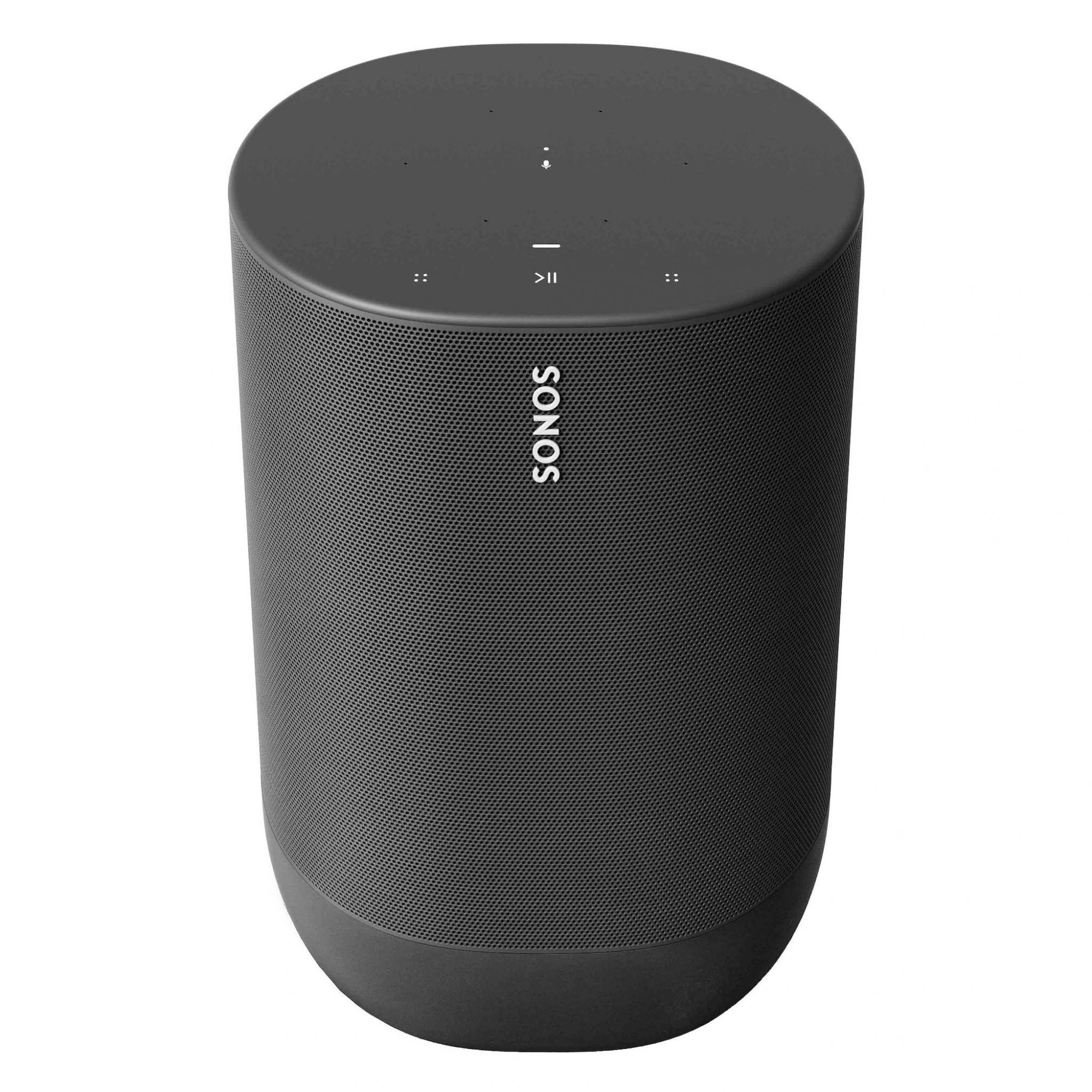
Sonos Move is one example of a portable, durable and outdoor smart speaker for both indoor and outdoor audio. With an IP56 rating, Move is resistant to humidity, rain, snow, dust, salt spray, UV rays, and extreme heat and cold.
Fine-Tuning the Gear Choice
To many consumers, this is where an outdoor audio system can start to sound expensive and invasive: “You want to tear up my beautiful yard to install a bunch of big ugly speakers?” For house-proud customers that spend more per year on landscaping than they do on healthcare, that’s a non-starter. Luckily, it’s also a myth.
Most outdoor audio speakers are constant voltage, like their ProAV distributed system cousins, and some of them are actually quite dainty compared to the amount of sound and frequency range they can produce. They can be ground-mounted, using a stake or base plate, or wall-mounted if you’d rather leave the yard unscathed. These speakers are easy to conceal with flowers or shrubs; a well-designed outdoor audio system is visually unobtrusive and blends into any environment.
Unless you’re all about that bass. You can get some bass frequency response out of 4-in. or 6-in. landscape speakers, but in most cases, you won’t get much. An outdoor subwoofer can add a great deal of depth and richness to the soundscape, but they also add some additional design considerations – because unlike outdoor speakers, most outdoor subwoofers are variable impedance. This is important to know when choosing an amplifier.
Call it a side effect of the neither-fish-nor-fowl nature of outdoor audio, but a complete outdoor audio system usually calls for a hybrid constant voltage/variable impedance design. That means that the amplifier needs to be able to manage constant voltage and variable impedance channels simultaneously. The amp needs to have adequate power. Fortunately, in constant voltage systems this is easy to calculate; because of the background nature of the application, 500 watts per channel is typically plenty to drive most landscape systems. It also needs to be rugged. Look for an amp with at least one variable impedance channel in addition to the constant voltage channels and robust protection circuits to prevent overdrive, underdrive, overheating and short circuits from damaging the amp.
With an installed distributed system, built with unobtrusive components, homeowners can kick back and enjoy their yards. They never have to worry about annoying their guests with music that is too faint or too loud; they’re not tripping over speakers or trying to incorporate giant fake rocks into their landscape. The outdoor ambience is always just right.
KEY TAKEAWAYS:
- Outdoor audio goals have more in common with corporate distributed audio systems than other residential applications.
- Those goals are best achieved by a system with multiple installed speakers – which can be very unobtrusive.
- Powering the system usually requires a hybrid amp with moderate power and superb built-in protections.
AWARDS
Presenting CT Lab’s 2022
Black Leaders in Consumer Tech
To commemorate Juneteenth, CT Lab Global Media would like to share a snapshot of the diversity in our own industry. The inaugural Black Leaders in Consumer Tech Awards shines a special spotlight on seven African-American leaders in the CT space who are driving the industry forward and making history in the process. We collected first-hand accounts of their career paths, challenges they’ve faced along the way, and advice they’d give to non-Black colleagues who want to support the inclusion of Black people in the industry.
Hear their thoughts below and join us in celebrating their accomplishments.
THANK YOU TO OUR SPONSORS
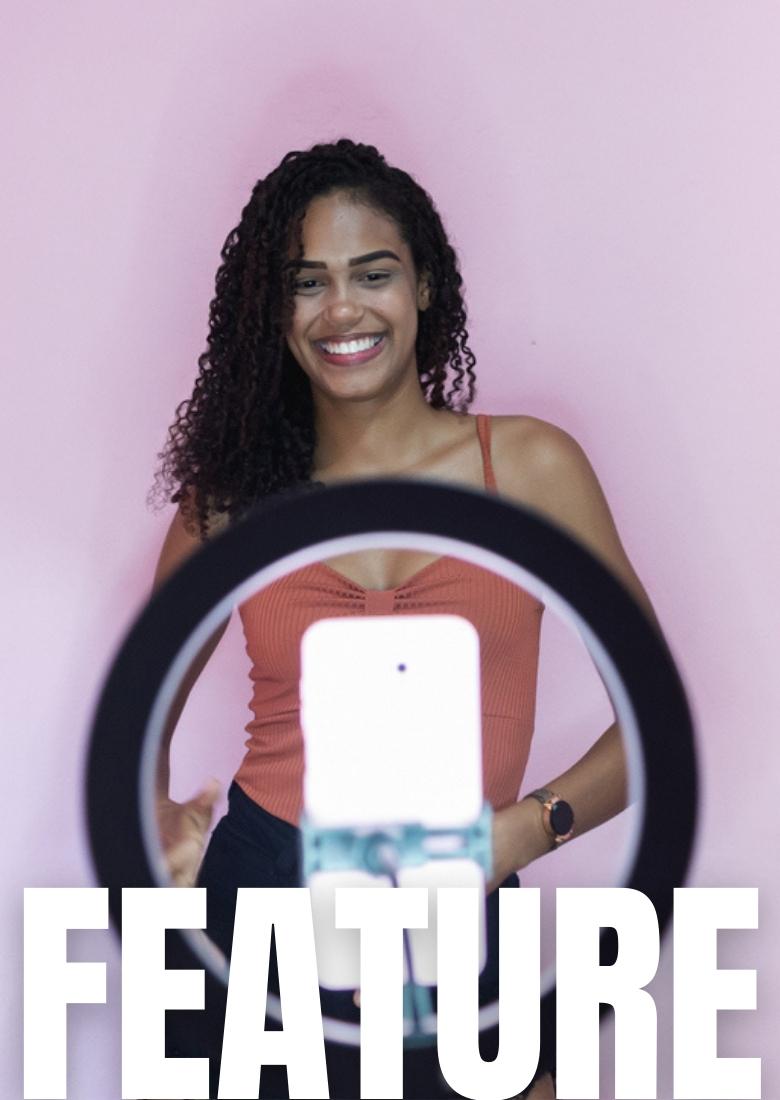
SOCIAL MEDIA
Instagram Reels vs. TikTok:
Which Is Best For Retailers?
Optimizing your social media content
through the most popular video platforms
By Brenda Thelusca
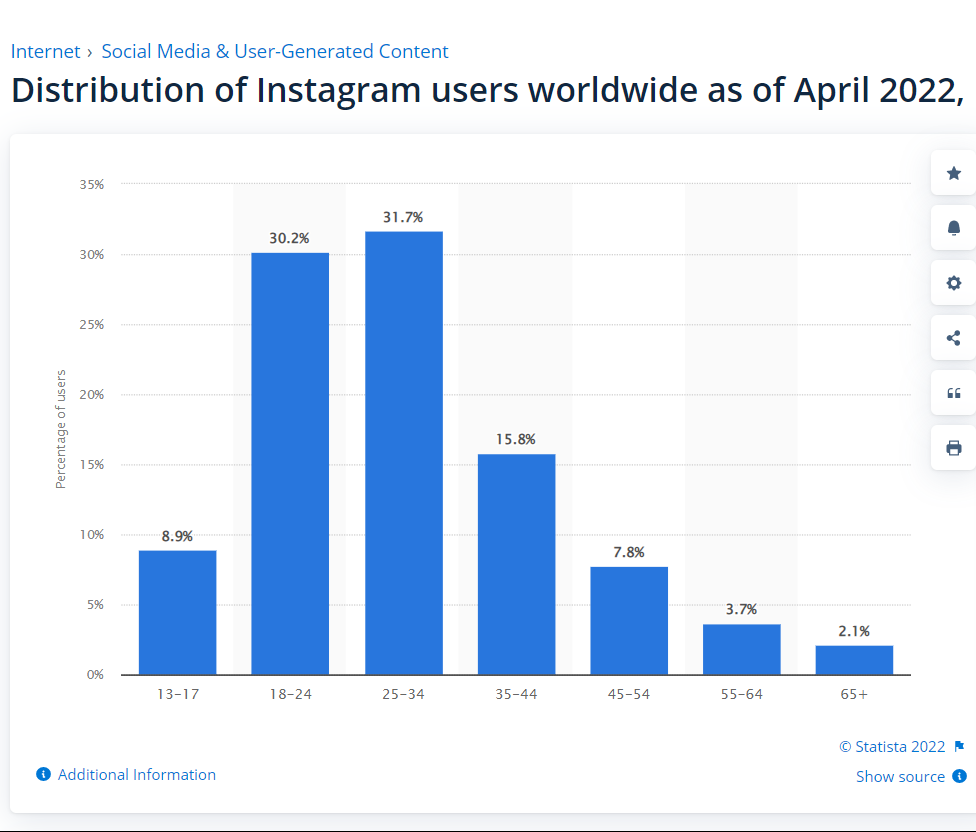
Social media is used by almost everyone whether it’s for marketing, business profiles or just sharing photos with friends and family. TikTok has taken the world by storm and is growing in numbers every day, but to compete with this video-sharing app, Instagram has added the Reels feature to its platform. But which platform is best for electronics retailers to promote? That depends on what product you’re trying to sell and your target audience.
How Instagram Makes It Harder to Cross Post
While TikTok has recently gained followers these past few years, Instagram has been around since 2010 and people have gotten used to its format. Instagram has 1.45 billion active users as of April 2022, which is more than TikTok’s one billion active users, and posting on the social app can reach new potential clients.
But Instagram Reels isn’t the same as TikTok, because it has a different algorithm, and if a video is reposted on Instagram with the TikTok watermark, the video will be de-prioritized. Instagram also shared that low-quality or blurry videos won’t get much reach and have fewer views than other videos. This is to prevent creators from cross promoting the same footage on their platform and to make sure quality videos are uploaded.
Use a High-Quality Camera. While this makes sense because Instagram is trying to compete with TikTok, it puts more work and strain on content creators. Not all Instagram users have 4K cameras to film their content. When businesses are trying to create Reels to promote their product, they should record with a phone with high camera quality. Thankfully, Instagram doesn’t leave creators to guess what videos are good enough for Reels and it provides a video on how to use Reels properly. Another helpful feature that Reels has is that it will notify users when specific audio is trending on the app. This gives retailers insight into what audio and trends could be going around.
Tag Products on Instagram. One recent feature that was added to Reels was product tagging and shopping. This gives the video maker the ability to tag the products shown in the video, so customers can purchase them directly. Retailers can use this feature to show consumers how to use their product properly, and consumers can purchase the product instantly without having to click multiple links.
Leverage Your Advertising. Having the convenience of quick shopping on social media can help increase sales, but that’s not the only way to increase sales and product awareness. Advertising on Instagram can be very helpful for retailers trying to spread awareness about their brand and reach a certain demographic. According to Hootsuite, Instagram’s age demographic of their audience is between the range of 18-24 years old (30.1 percent) and 25-34 years old (31.5 percent). In conclusion, Gen Z is still the main demographic on Instagram, so if you’re trying to reach an older audience Instagram might not be the best choice for you to advertise on.

Using TikTok for Advertising and Marketing
When advertising on TikTok, the main audience demographic is younger than on Instagram. Even though TikTok now has over 138 million active users in the U.S., according to data on Wallaroommedia, ages 10-19 make up the largest percentage at 32.5 percent of U.S.-based TikTok users, and coming in second is users aged 20-29 at 29.5 percent. This means that items like smart appliances are not the best to advertise on the platform, since the main audience is younger and might not be able to afford the newest model.
Watch Out for the Changes to Business Accounts. There are a few downsides to using TikTok for your business, and that is caused by the recent changes to the business accounts. Before creators could post a link to their website on their TikTok biography when using a business account, but now TikTok requires a business account to have at least 1,000 followers. This recent update does put a hindrance on newer companies trying to get more customers, because now users have to leave the app to find the website. A way to work around this is to direct traffic to an Instagram page, and they can follow the link from there.
Use Loyalty-Free Audio. Another problem with TikTok is once you have a business account, if certain trending audio is used from a musical artist, the sound is unavailable to business profiles. Now businesses have to choose loyalty-free audio that isn’t as popular or uses their voice as a narrative. But don’t write off TikTok just yet because companies have gained immense recognition on the video-sharing app because they create unique and entertaining content. Companies like Duolingo have grown in popularity and awareness because they made funny videos that caught millions of users’ attention.
Grab Attention Quickly. One important detail about TikTok is that content is consumed quickly. When creating a TikTok, retailers need to get to the point as quickly as possible, because people will scroll before you can even get a word out. Retailers must make sure that their videos are fun, have good quality, and are straight to the point. Another way to increase your audience’s reach on TikTok is to use hashtags that are trending or relevant to a certain subculture on TikTok. For example, a person who dedicates their page to fitness or health would use the hashtags #fittok or #healthtok. This health algorithm shows your video to an audience that actively searches for that tag or is a part of that subculture community on TikTok.
Know the Algorithm. The TikTok algorithm has some similarities compared to Instagram because videos do well based on content interaction. The more people that like, comment, or share your video the more success it will have. To increase interactions and your page’s reach, TikTok suggests switching to a pro account because then you can view insights and analytics on your videos. This information can guide you on how to develop your strategy on what times to post and who your audience is. If you still need more help in reaching your audience, TikTok has a business page that gives tips and tricks for people who try to advertise through their page.
Find Your Age Demographic. Both TikTok and Reels possess valuable resources when it comes to advertising on social media, but the best way for retailers trying to create a social presence is to find their main audience’s age demographic. For those who want to go more in-depth about their product, Reels is best because Instagram users consume content slower. The TikTok algorithm is still a bit of a mystery, but as long as retailers are posting content when their followers are most active, are using hashtags related to their subculture, and making fun, creative content, their page will attract attention. As long as you know who your main audience is, using social media to gain sales or recognition can be beneficial to the future growth of your company.
KEY TAKEAWAYS:
- Determine your audience demographic before investing in content on a social media platform and utilize the platform most in line with your customers.
- Know the rules that the platform follows before posting content, like using loyalty-free audio and tagging appropriately.
- Interact with your audience and others in your industry to increase viewership.

SALES
Capitalizing on the Wearable Turnover
Now is the time for trade-in programs
among certain connected products
By Scott Wagner, president, Device Lifecycle Solutions, Assurant
While smartphones have traditionally led the way when it comes to connected devices, the rapid rise of hearables and wearables and their growing popularity amongst tech savvy consumers is widening the breadth of consumer connected devices. According to the International Data Corporation (IDC), in 2021 the wearables market grew 20 percent year over year with total shipments reaching 533 million units.
With more hearable and wearable product options being introduced to the market at a variety of price points, retailers can offer customers more opportunities to upgrade to the next generation of smart watches, fitness trackers, earbuds, etc. It’s a great time to begin cultivating the secondary device ecosystem for these devices, using the thriving trade-in market for smartphones as the blueprint for capturing the latent value in pre-owned products while providing incentives for customers to upgrade to new devices.

Factors Driving Market Growth
The growth in the hearables and wearables markets over the last two years is, in part, an outcome of the COVID-19 pandemic, which precipitated a shift in consumer behavior and habits. The pivot to working from home, increased consumption of digital and audio media, and rise of tele-health and virtual fitness have led to more people exploring the possibilities and advantages these products offer.
It’s also a result of technological advancements. While smartphones have been the epicenter of a connected lifestyle, the next era of interconnectedness will leverage 5G, AI and the internet of things (IoT) to create a more central role for wearable technology. The cumulative progress of R&D investments will also bring about products with longer battery life, more features and ease of use and better ergonomic designs.
Another factor that will continue to drive growth of hearables and wearables is sustainability. According to WEEE Forum, the worldwide mountain of electronic waste in 2021 was predicted to be 57.4 million metric tons — that’s greater than the weight of the Great Wall of China.
The question of sustainability is top of mind for many consumers who are increasingly concerned with the lifespan of their electronic devices and how they can reduce the amount of toxic e-waste that finds its way into landfills. In fact, 75 percent of consumers would be more likely to trade in their electronic device if they knew it would be properly reused or recycled, according to Assurant research.
Keys to a Successful Trade-In Program
In light of these trends, now is an opportune moment to begin taking advantage of the secondary market for hearable and wearable offerings. Building on the lessons from the used smartphone market, retailers can expand the scope of their trade-in programs to include hearable and wearable devices. And in doing so, provide incremental value to their customers, accelerate the adoption and upgrade to newer generations, improve their customers’ shopping experience and create new revenue and profitability centers as well.
This launch of hearable and wearable trade-in can be successfully accomplished so long as the retailer’s current trade-in solution is built on a solid foundation of technology, logistics and secondary market capabilities. The software used to power the current in-store and online trade-in journey must be adapted to support the unique aspects of wearable and hearable device trade-in.
Additionally, the downstream logistics and device operations centers must be equipped to securely manage and destroy all residual customer proprietary data stored on these devices. And of course, the operations center must also be equipped to effectively and safely clean the units in preparation for downstream reuse by a new owner. Lastly new channels of distribution need to be established to effectively shepherd these units into and through the secondary markets to a new owner in a way that reclaims maximum value from the inventory.
This launch of hearable and wearable trade-in can be successfully accomplished so long as the retailer’s current trade-in solution is built on a solid foundation of technology, logistics and secondary market capabilities.
Millennials and Generation Xer’s are Most Likely to Upgrade
As you might expect, Millennials and Gen Xer’s are the most likely to buy a newer version of their connected devices. Seventy-nine percent of Millennials and 77 percent of Generation Xer’s said they are highly or somewhat likely to upgrade to newer models.
They aren’t the only customers to target for trade-in promotions, however. Across generations people have become accustomed to upgrading their smartphones as new models become available. That same behavior is starting to transfer to connected products.
Among those who own a connected product, the likelihood of upgrading to a newer version is more than 50 percent for a broad range of product categories. This is especially true within product families, as consumers tend to become loyal to one brand. Repurchase intent is highest for the same brand or type of product.
Given recent inflationary pressures, being able to transfer value from existing hearables and wearables towards the purchase of new models could be a timely incentive to get customers to upgrade. Combined with the knowledge that they can also help alleviate the growing e-waste problem, consumers have never been more primed to trade in.
KEY TAKEAWAYS:
- The same behavior associated with upgrading a smartphone frequently is now being transferred to other types of connected products.
- For a successful trade-in program, your downstream logistics and device operations centers must be equipped to securely manage and destroy all residual customer proprietary data stored on traded devices.
- Sustainability is top of mind for many of today’s consumers, so take advantage of that in your marketing for trade-in programs.
Scott Wagner is President, Device Lifecycle Solutions at Assurant, a global business services company that supports, protects and connects major consumer purchases, and enhances the customer experience through mobile device solutions, extended service contracts, vehicle protection services, renters insurance, lender-placed insurance products and other specialty products.

E-COMMERCE
How to Plan for the 2022 Holidays
A look out how the supply chain and consumers’ demands will impact sales this year
By Egon Sanders
(Left) Sony’s BRAVIA XR A95K 4K HDR OLED TV includes Intelligent TV processing technology with Cognitive Processor XR as well as immersive depth and realism enhanced by XR OLED Contrast Pro.
As we round the corner and head into the third holiday season of the COVID-19 era, many of the same questions continue to linger. Primarily: how will the pandemic shape consumer spending and, perhaps more crucially, how will supply chain issues affect that spending? These familiar questions haven’t gone away, certainly, but there’s a sense that we’ve all become more used to them — as manufacturers, retailers and consumers — and that we’re on firmer footing, with a few years of dealing with these challenges under our collective belts.
Of course, as we look ahead to the year’s holiday shopping season, it’s always instructive to look back. Despite the concerns about supply chains, there were above-average sales during the holiday 2021 buying period, with bellwethers like Apple seeing record-breaking iPhone sales and strong sales of Macs and AirPods as well, while smart TVs, game consoles, smart home and home audio products all continued to perform.
“There was plenty of discussion about getting out to the stores early because of concerns about inventory, but in the end, during last year’s holiday season there was a decent level of product availability, in general,” said NPD consumer technology industry analyst Ben Arnold. Indeed, according to the National Retail Federation (NRF), electronics and appliance stores saw a 13.8 percent increase in sales; indeed, according to Insider Intelligence, the 2021 holiday season in fact represented the fastest overall retail year-on-year growth in more than 20 years, thanks largely to accelerating wage growth, the lasting effects of government stimulus checks, and a strong stock market. [It’s worth noting, however, that consumer electronics gave way to apparel and accessories as the number one category in e-commerce sales.]

The 65-in. Class S95B OLED 4K Smart TV from Samsung boasts 8.3 million self-lit pixels and 4K AI processing.
Will This Year Be Another Hit for Tech?
NPD’s Arnold expects another big holiday for technology spending in 2022. He points out that for electronics, holidays are typically about the same product categories, by and large: TVs, headphones, game consoles — as well as Apple, which is usually its own story during the holidays. Arnold points out that 2020 and 2021 were massive years for technology sales, and that what he’s seeing so far this year indicates that technology sales are a little slower. This holiday, he believes we’ll see strong sales in televisions — especially with screens 70-in. and above, and those using advanced screen technologies.
“We’re seeing OLED performing really strongly and gaining awareness and coming to more screen sizes, and I think there’s a trend around premium, emerging segments in tech,” said Arnold.
While there was a lot of volume selling in the last two years in terms of mid-market products — 55-in. LCD TVs and the like — he wouldn’t be surprised to see a spike in the sales of more upmarket goods like those big, living room centerpiece OLED sets. Ultimately, sales of video and home theater products have been elevated over the last two holiday seasons, and Arnold says he’d be surprised to see that change in 2022.
“Something I’ve been hearing is that the supply on [TV] panels has really ramped up, which means that we could see more inventory and some steeper promotions this holiday, compared to last holiday,” he said, adding that this will likely be a more “promotional” holiday than last year in the consumer electronics space. “The rates of pricing growth throughout the year, to me means that consumers will be a little more focused on the holiday; if I’m interested in buying a TV but in September it’s a bit out of my reach in terms of price, I’ll wait until the holidays to see if that 70-in. TV goes down in price. And I think that’s sort of hardwired into a lot of consumers.”
Indeed, while supply issues remain a massive challenge, companies are also rapidly adapting. We’re seeing tech companies having to be more creative — in terms of using components sourced from various different manufacturers, and sometimes actually even using slightly different components. In an extreme example, Wired details how “one large industrial conglomerate had resorted to buying washing machines just to scavenge the chips inside them for its products. Of course, the consumer electronics space is necessarily more practical.”
“This might mean certain product SKUs have multiple slight manufacturing variations, replacing a resistor here or a capacitor there with one that performs similarly, but which ultimately combine to make a product that functions identically across all of these minor variations,” said Arnold. “I believe that at the end of the day, especially with the big tech companies, we’ll see the inventory on the products we want this holiday.”
Looking Ahead
As far as emerging trends, it’s safe to expect a continuation of what we’ve seen in recent years, particularly as it relates to the pandemic. “One thing we’re seeing [at NPD] is that consumers are more focused on health and wellness than they have been historically, and with that in mind, Apple Watches and other fitness trackers have performed decently, and I’d expect that to continue — especially with some new Google smartwatches potentially coming to market,” said Arnold. He points out that virtual reality had a stellar holiday in 2021, and that recent news about new headsets potentially coming to market could drive up interest for holiday VR sales in 2022. While gaming wasn’t as big during 2021’s holiday season as it was in 2020 — the real pandemic gaming surge year — he expects it will have another strong holiday season, should there be enough supply of the game consoles, which in recent years have struggled to keep up with demand.
While trend forecasting can be tricky business, and likely depends on how things pan out over the next few months, it’s worth remembering that we’re still in the collective consciousness of the pandemic era. If infection and hospitalization numbers continue to move in a positive direction, Arnold points to a possible lift in sales of things like home security cameras and other home security accessories, as people potentially make plans to do more traveling and spend more time outside the house than they have in recent years.
“We’ve spent a lot of time buying gadgets, but what are the products that add more value to our lives?” said Arnold. “I think that will be one of the trends we see at the holidays.”
KEY TAKEAWAYS:
- The supply on TV panels has increased, meaning there should be more inventory and some steeper promotions compared to last holiday.
- Sales in televisions — especially with screens 70-in. and above, and those using advanced screen technologies — are expected to be strong this year.
- Home security cameras and accessories might decrease, as consumers start to spend more time away from home.
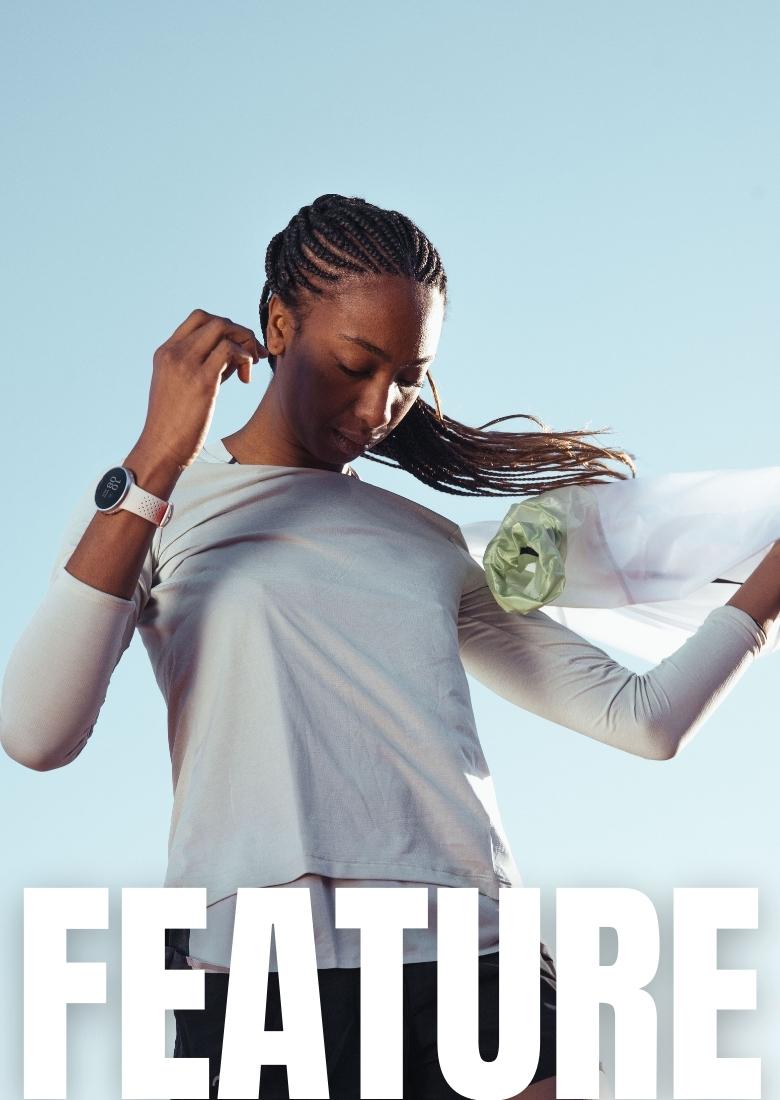
WEARABLES
The Top Smartwatches & Fitness Trackers This Year
Health data takes on style in today’s
top connected watches
By EGON SANDERS
As even a cursory glance at the wrists of your fellow humans will surely confirm, the wearable revolution is in full swing. What began as just a small pool of primitive, rather unsightly options has blossomed into an entire industry unto itself, with smartwatches and fitness trackers of all shapes, sizes and functionality. From high-end wristwatches with powerful processors to simple, sporty fitness trackers, we’ve gathered together some of the newest and most compelling options on the market.

Withings ScanWatch
Withings’ Scanwatch is unique for a number of reasons, not least of which being its looks: unlike most of its chunky, screen-forward competition, the ScanWatch looks like an analog watch. A side benefit of this small screen is that it can also last far longer than most of said competition— up to 30 days. It comes with full access to the Withings Health Mate app, and has a key feature for those worried about heart issues: namely, its ability to detect atrial fibrillation and measure blood oxygen levels (Withings got clearance from the FDA before selling it in the U.S.). For a watch that can make you look good and potentially keep you alive, at $299.99 the ScanWatch is tough to beat.
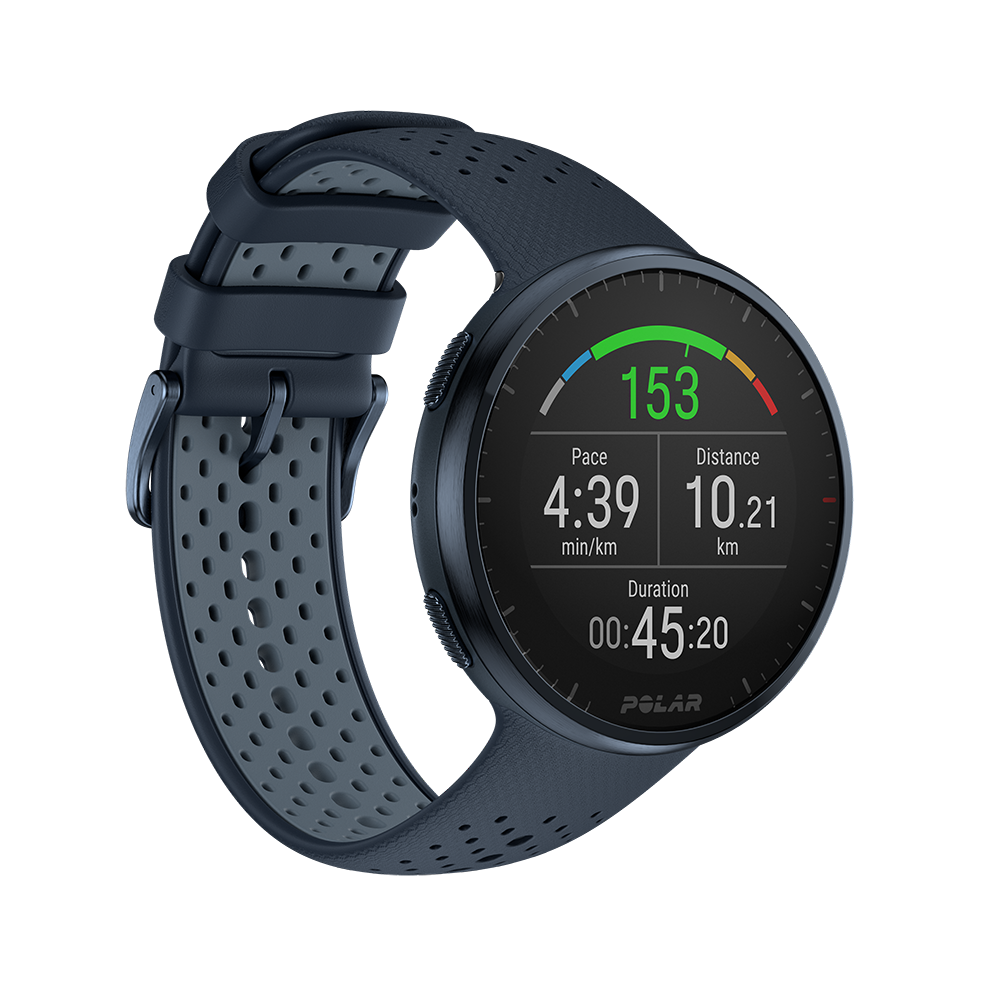
Polar Pacer Pro
The latest from fitness brand Polar, the $299.99 Pacer Pro’s real power feature is designed to help runners get a sense for how efficiently they’re running—something that’s only possible thanks to Polar’s impressively deep data collection, which tracks things like breathing rate, heart-rate variability and heart rate. All of these affect a runner’s ability to consistently hit desired times and distances. And that’s exactly who the Pacer Pro is for: folks who take their running seriously, and want a watch that will do the same.
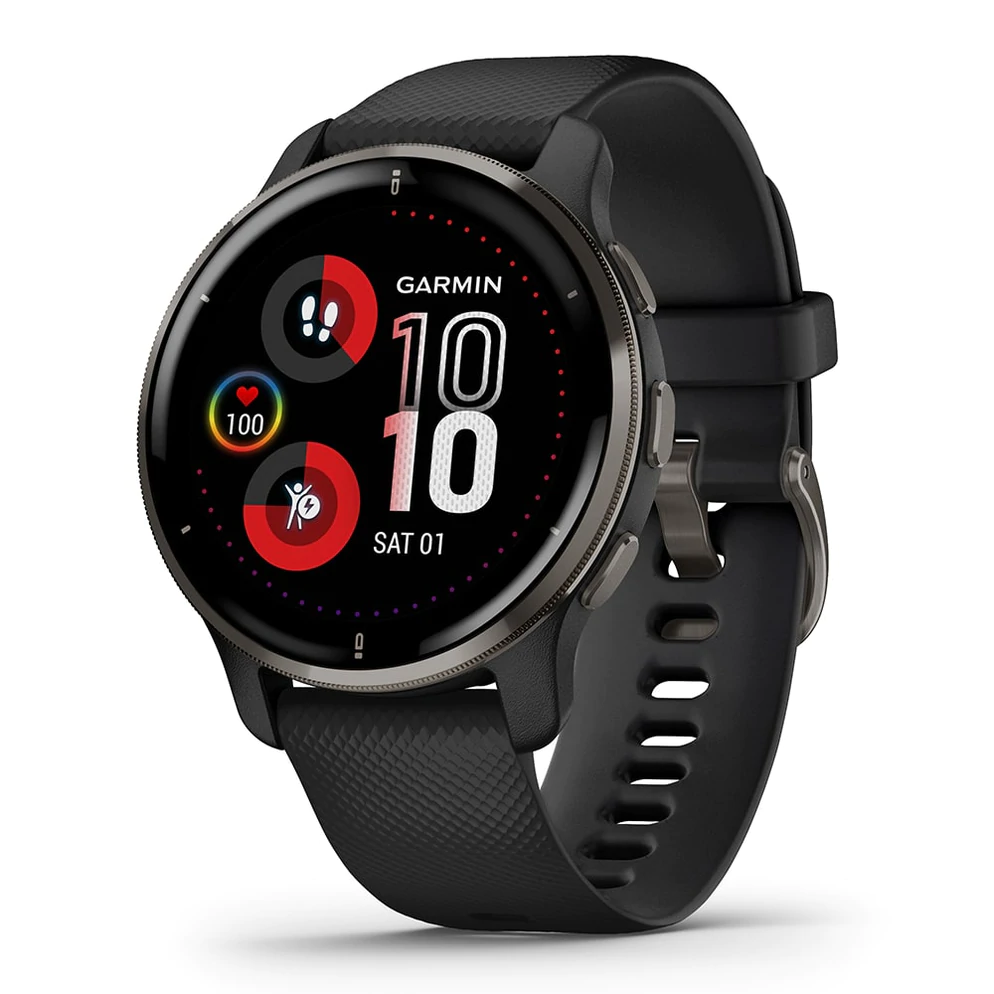
Garmin Venu 2 Plus
The follow-up to the existing Garmin Venu 2, the Venu 2 Plus adds one big new feature: voice control, allowing you to use your phone’s digital assistant (Siri, Google Assistant or Samsung Bixby) to do all that digital assistant-y stuff, and leave your smartphone in your pocket while you do so. It hits all the big features for health tracking as well: SpO2 measurements (i.e. the amount of oxygen-carrying hemoglobin in the blood, relative to the amount of hemoglobin not carrying oxygen), 24/7 heart rate tracking, stress tracking, sleep monitoring and women’s health monitoring. There’s even an onboard GPS to make sure you get home safely, with or without your smartphone. Available in black and slate, cream-gold and ivory, or powder gray and silver for $449.99.
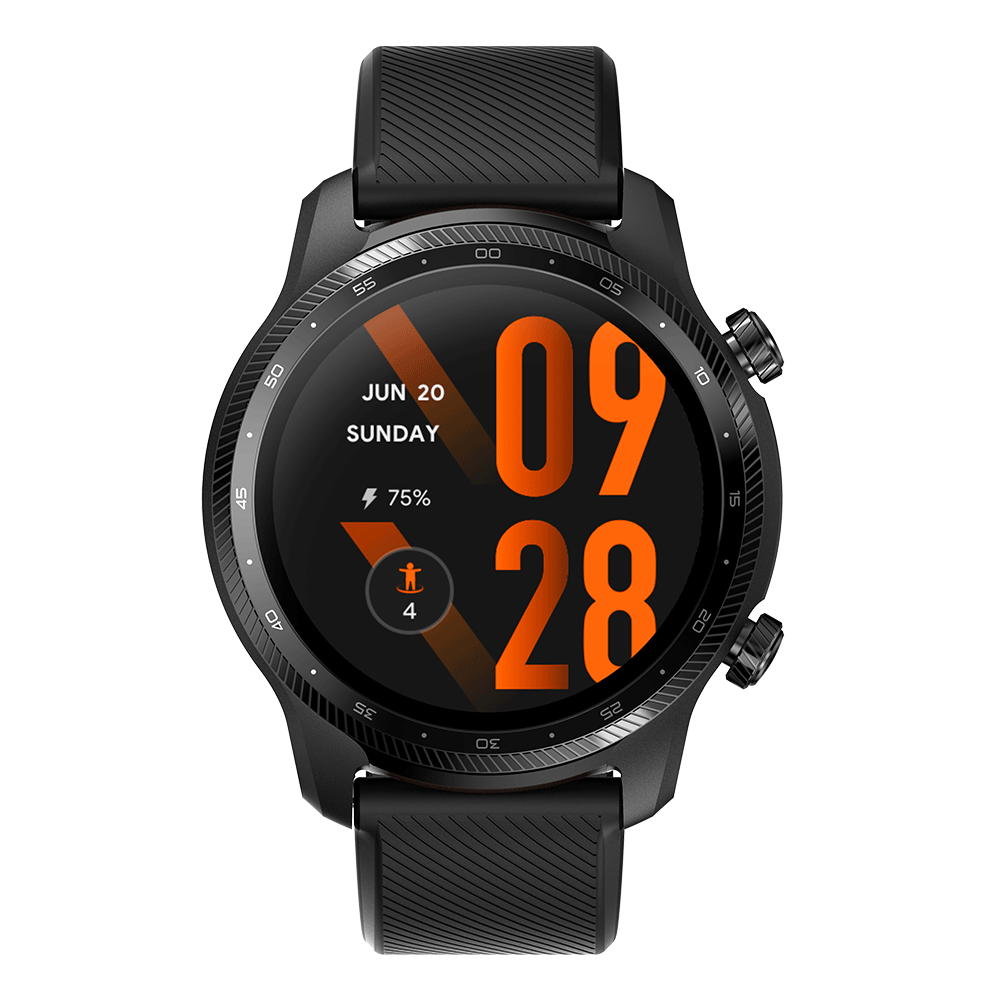
Skagen Falster Gen 6
Skagen has carved out a niche of high-end, low-profile smartwatches, and the Falster Gen 6 is its latest and greatest. Available in a total of six different models (with various colorways and strap types), it also comes with some wonderfully minimalist, Scandinavian watch faces. Running Google’s Wear OS on a snappy Snapdragon Wear 4100+ processor, it’s a great performer—whether using its Google Assistant support to do things like play music, or track everything from heart rate to sleep tracking to blood oxygen saturation using its SpO2 sensor. Available now for $295.

Fitbit Charge 5
The latest from one of the oldest fitness tracker brands around, the Fitbit Charge 5 has a lot going for it. From its bright, crisp AMOLED screen to its ability to track everything from stress to heart rate to electrocardiograms, it certainly checks a lot of boxes. It has an onboard GPS, and fast-pairs to your Android phone in a flash. There’s a $10 per month subscription for Fitbit Premium, which gives you access to a cool new “Daily Readiness” feature (which takes into account your recent activity, heart rate variability, and sleep data to give you a sense of how hard you should push yourself on any given day.), as well as personalized sleep and stress feedback. It’s available in a wide range of colors, and its included large and small standard silicone bands can be swapped out with lots of alternatives. Available for $149.99.

Coros Pace 2
The Coros Pace 2 isn’t as high-tech looking as some of its competition—most apparent in its relatively lofi LCD screen—but for the dedicated athlete, it’s as practical as it is powerful. At just 29 grams it’s extremely light, and can go for several weeks between charges. Perhaps most importantly, it integrates with the popular workout app Strava, which lets you map your runs and bike rides with elevation data, while its onboard GPS makes sure you’re always on track. At $199.99, it’s also considerably more affordable than much of its competition.

MOBILITY
Have Tech, Will Travel
Even with higher prices, consumers say
they still plan to hit the road
By JOHN R. QUAIN
(Left) Tile Mate helps keep track of your valuables with up to a 250 ft. Bluetooth range and a 3-year, non-replaceable battery.
In spite of rising inflation and falling 401Ks, consumers are pushing ahead with travel plans — at least for this summer. To make vacations work — and to work during vacations — many will also be looking for tech that will make that economy flight a little more comfortable and that Airbnb a little more like home. Laptop computers, wireless earbuds with active noise cancellation, and smartphone accessories will continue to lead the travel tech pack, according to analysts and consumer electronics companies.
While inflation continues to erode consumer confidence, according to a recent Tripadvisor global survey, 4 out of 10 respondents plan to go ahead with travel plans. Furthermore, air travel numbers continue to approach rates not seen since before the pandemic. On a weekday in June 2022, for example, the TSA logged 2.4 million passengers compared 2.7 million on the same day back in 2019, a sign some take to show things are getting back to normal.
To make sure they can still afford to travel, respondents in the Tripadvisor survey said that they will cut back in other areas such as dining out and clothing purchase to compensate for rising prices. So the pent up desire for travel appears to be overcoming other budgetary fears.
“But with inflation looming, consumers are still looking for bargains on discretionary tech purchases,” emphasizes Avi Greengart, founder and lead analyst at Techsponential, a technology research firm.
Lisa Emard, director of media relations at Acer America, agrees and notes that shoppers and travelers are looking for value: “Due to supply chain issues and the lingering effects of the pandemic, customers are more thoughtful about purchases and are doing research to ensure they’re purchasing high-quality, reliable products they’ll enjoy using for a more substantial amount of time.”
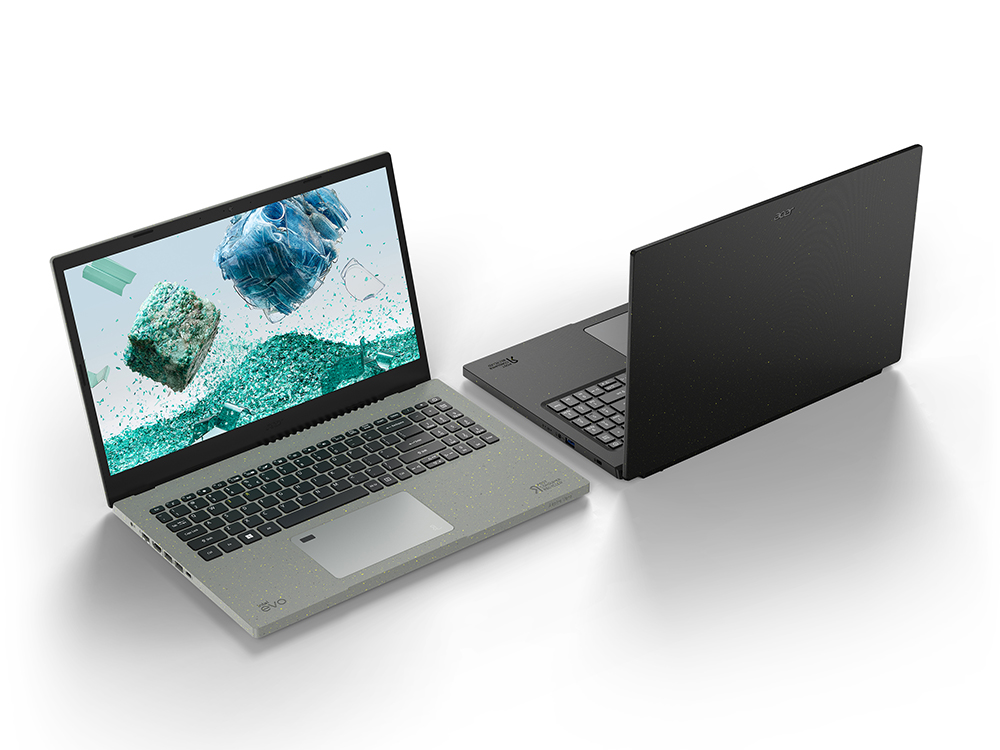
Aspire Vero’s laptop uses 30 percent PCR plastic, which is made from post-consumer resins and is eco-friendly and helps reduce landfill waste.
Entertaining Travel
For Zooming back into the office or streaming Disney+ at the cottage, travelers still want lighter, more portable laptops, but with increased performance and sharper OLED screens. “The combination of thin-and-light designs paired with performance processing and dedicated graphics means they can be used for gaming, as well as school and professional work,” said Emard.
To save accommodation costs, more travelers are booking through sites like Airbnb, and since those rentals don’t usually offer all the entertainment options of a traditional hotel, many people are looking for tech solutions. Roku’s Streaming Stick 4K ($39.99), for example, is a popular device for bringing streaming video and music services from home on people’s peregrinations. It plugs into an HDMI port on any TV but retains the owner’s security and privacy because the traveler doesn’t have to enter login and password information on a stranger’s Airbnb TV.

The Jabra Elite 7 Pro wireless earbuds uses new Jabra MultiSensor Voice technology, which combines four microphones with an advanced voice pick up sensor in each bud as well as bone conduction technology to transmit your voice.
To help make sure that getting there is half the fun — rather than half the hassle — Greengart says the tech travel categories to watch are bag and luggage trackers, such as Tile Mate (starting at $25) and Apple AirTags (starting at $29), and active noise canceling (ANC) headphones.
“ANC used to be reserved for premium over-the-ear headphones, but can now be found in more affordable wireless earbuds as well,” said Greengart. Models like Jabra’s Elite 7 Pro earbuds, for example, offer better sound quality and comfort than Apple’s Airpods (3rd generation) for less money ($160 vs. $179).
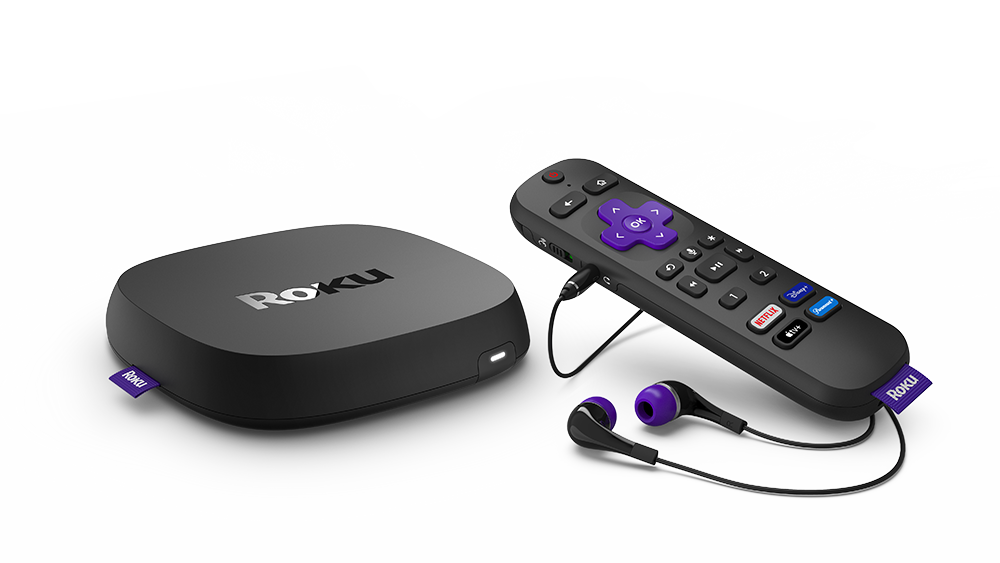
Roku Streaming Stick 4K offers support for Dolby Vision and HDR10+ as well as a faster startup speed, plus quicker switching between apps.
A Different Kind of Eco Travel
Eco tourism has transitioned to sustainable tourism, with destinations like Switzerland offering electric car tours and even an e-bike tour of the lake region around Lucerne. The trend has also all but created popular brands, such as Klean Kanteen, which in addition to water bottles makes a stainless steel, leakproof Food Box set ($64.95) to carry food onboard for those flights that only offer protein bars and cookies. Meanwhile, newer sustainable brands like Zealios have emerged with products like Sun Barrier Reef-Safe sunscreen ($18) to meet the environmental rules at destinations like Hawaii.
But eco also means economy these days. As travelers get back out there, according to the Tripadvisor survey, they say they want to do it in more sustainable ways but aren’t willing to pay more to do so: six in 10 of those surveyed say they won’t spend more for eco-friendly options.
“Sustainability is an important part of a brand’s value, especially with younger consumers. However, consumers are not yet basing tech buying decisions primarily on specific eco-friendly practices,” concurs Greengart. But he notes that “sustainability is an important part of a brand’s value, especially with younger consumers.” So highlighting ecological or climate friendly practices or features may tip a buying decision in favor of one product over another.
“Customers want eco-minded options that reduce their ecological footprint,” said Acer’s Emard, adding that Acer’s Aspire Vero laptops use 30 percent post-consumer recycled plastic in the chassis and bezel.
Still, there’s a category of tech products that may continue to be virtually inflation-proof: smartphone accessories, such as chargers and cables. “A big trend that continues to expand is power–the OtterBox power category has seen tons of growth over the last year,” said OtterBox spokesperson Kianna Noonan. Chargers and cables are more of a necessity rather than a discretionary purchase, but Noonan says Otterbox’s protective phone cases are also continuing to do well. “Protecting an investment such as a phone is something that people must consider now more than ever,” she added.
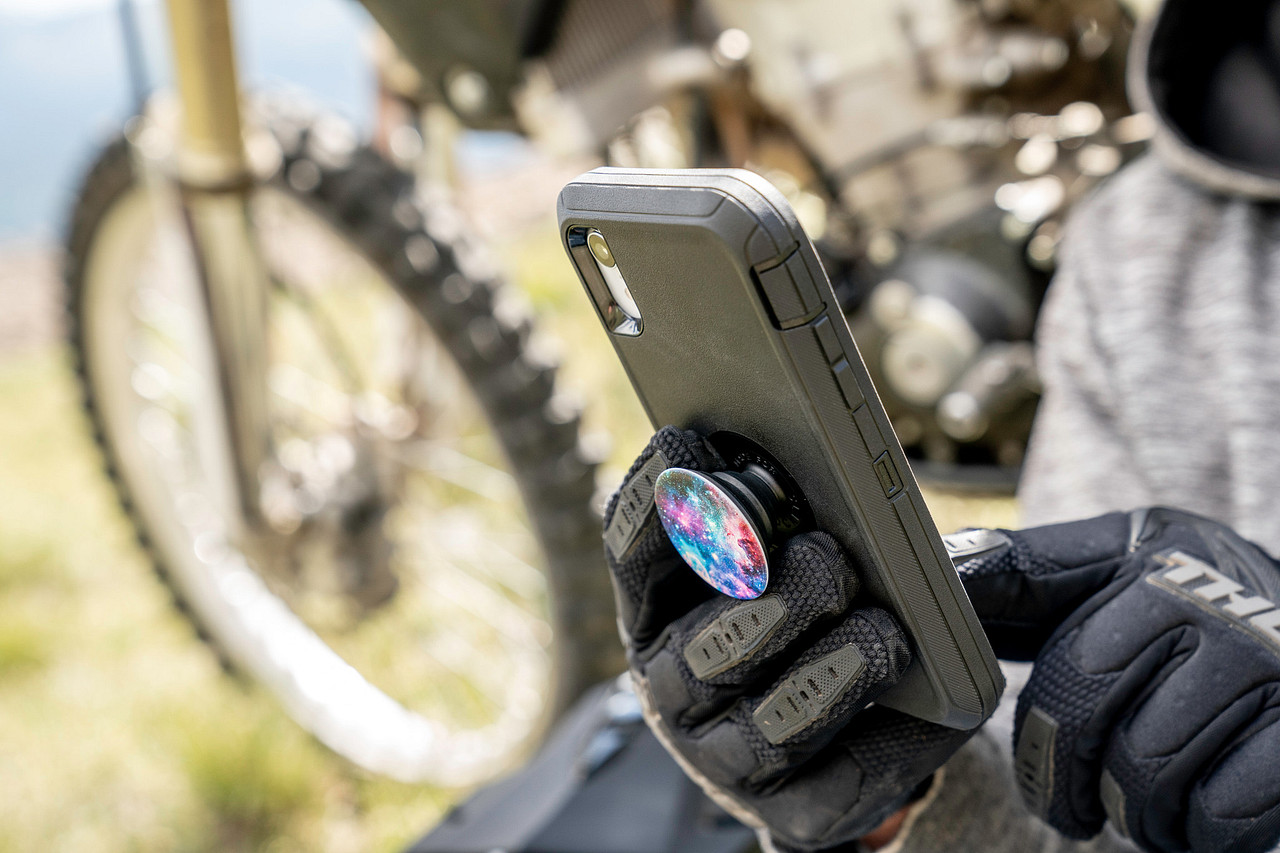
Otterbox offers slim and aesthetically pleasing protection for smartphones and includes a soft inner and hard outer layer to absorb and deflect impacts.
Tomorrow’s Travel Outlook
Will the travel trend hold up and buck the forces of inflation? According to a survey of 4,000 U.S. consumers by Destination Analysts, a travel and tourism market research firm, 86 percent of respondents said they plan to travel in the next 12 months. But whether those numbers hold up may depend on whether or not the rate of inflation can be brought under control.
In the meantime, it’s more important than ever for retailers to keep one eye on travel trends and one eye on back-to-school buying, according to Acer’s Emard. She says retailers need to be able to reposition some electronics as we go from summer vacations into fall classes and a return to offices. In other words, today’s traveling laptop is tomorrow’s hybrid work computer.
KEY TAKEAWAYS:
- Pent-up demand for travel means consumers will still hit the road this summer.
- Inflation fears mean more carefully considered travel tech purchases.
- Eco-friendly and sustainable products are important for buyers — but they are not willing to pay more for them.

GADGETS
Making the Most of Your Smartphone
Accessories today can enhance
wellness, connectivity, A/V recording and more
By MIKE KOBRIN
Paired with an app, the Muse S (Gen 2) headband detects and responds to brain activity with guided medications and sleep-supporting soundscapes.
For around a thousand bucks, a top-tier smartphone provides a dizzying amount of functionality in addition to talking and messaging. But steadily growing and evolving universes of accessories add remarkable depth to your digital Swiss Army knife in three key areas: power, protection and features. NPD Group’s executive analyst Benjamin Arnold notes the growth so far this year in mobile power and device protection, citing that “2021 sales recovered [from pandemic-related losses in 2020] as retail restrictions lifted and people engaged in more activities outside the home. The success of popular handsets in ’21 also helped to drive more investment in the category.”
The pandemic was also a time where many of us decided to get creative, pay attention to wellness and maybe escape just a bit. Now that we’re easing back into normal life, we can bring those pursuits with us on the go with smartphone accessories for photo/video, music creation, wellness and gaming. It’s worth noting that although many of our favorite add-ons work across platforms, some OS-specific items like Apple’s MagSafe ecosystem of chargers and mounts deserve attention as well.
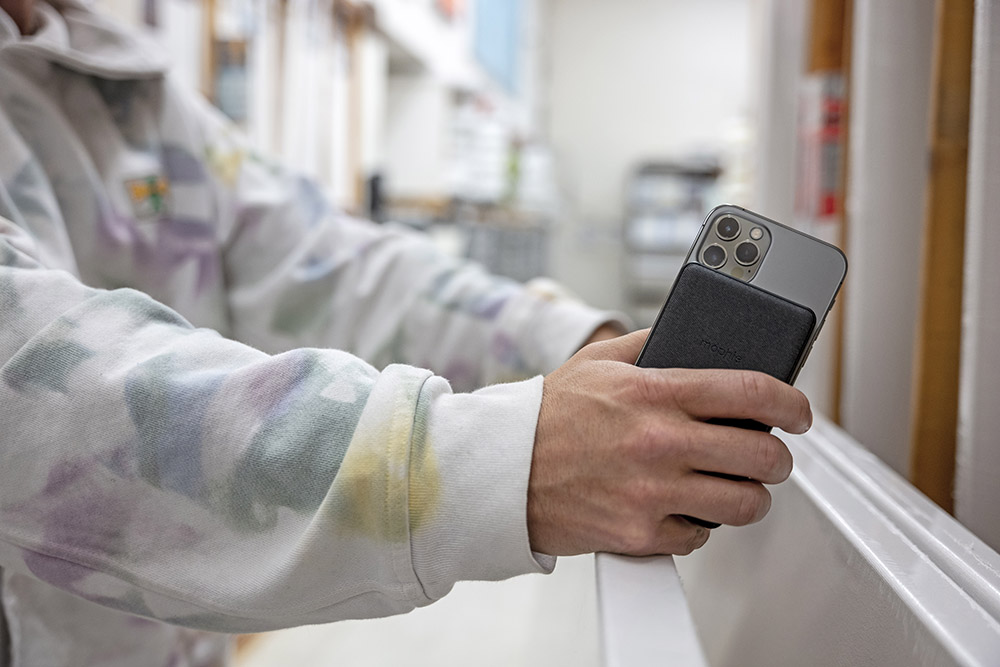
Mophie’s snap+ juice pack includes a 5000 mAh battery that works with Apple’s MagSafe system and also snaps to the back of compatible iPhone models.
Capturing Moments — and a Watching Audience — More Effectively
Death Digital’s Death Lens is an inexpensive way to add a little style to a photo shoot, with fisheye and wide-angle models that fit even the newest iOS and Android handsets. Moment offers pricier, higher-end lenses in macro, wide-angle, fisheye, anamorphic and tele models that add extremely sharp glass to any smartphone lens with pretty amazing results.
TikTok stars will love the new wave of smartphone mounts that automatically track subjects so they’re never out of the picture. Belkin’s Magnetic Phone Mount with Face Tracking is a solid inexpensive option for iPhone 12 and 13 users. It uses Apple’s MagSafe technology to snap the phone to the mount instantly in perfect alignment, and the accompanying app connects to social media accounts for quick and seamless posting. The more expensive Pivo Pod Silver uses a more traditional clip-style grip, so it supports most handsets and has bells and whistles like fast rotation, compatibility with video call apps, multiple tracking modes and 12 shooting modes.
Creating Better Audio
Mobile music accessories help you turn your phone into a miniature studio and record music or podcasts anywhere. If you want to use a handful of mics to capture a roundtable discussion or a band performance, the IK Multimedia iRig Pro Quattro I/O gives you four mic/line inputs to grab up to 24-bit/96kHz audio with. It runs off USB, batteries or an optional power supply.
Need to get your melodies down on a plane or hotel room? Connect the Akai MPK Mini Mk3 25-key keyboard to your phone and record directly into mobile audio recording software. It has 128 built-in sounds and assignable pads so you can create beats. With its integrated speaker and 14-hour run time on battery power, it can also function as a standalone instrument.
Gaming on the Go
Turning your iPhone into a full-fledged mobile game console is as easy as snapping on a gaming controller like the Backbone One, which is compatible with tons of Apple Arcade and other games and has an ergonomic grip. The Razer Kishi V2 is the next generation of a popular mobile controller for Android phones that, like Backbone One, has a similar button layout to controllers for gaming consoles like XBox. An iPhone version will be available later this year as well. Both require downloading apps in order to use them; both apps allow users to record gameplay and post to social media.
The Trending Factors that Sell Mobile Chargers
Speed and wireless are the two hottest trends among mobile chargers. Anker’s Nano II uses gallium nitride components to provide up to 100W of power in a very compact form factor, letting you power up your phone very quickly via one USB-A and 2 USB-C ports.
Mophie also makes fast GaN chargers, but the company’s snap+ juice pack has been extremely popular; this 5000 mAh battery works with Apple’s MagSafe system and simply snaps to the back of compatible iPhone models. There’s also a version with a built-in wallet.
Belkin’s 3-in-1 Wireless Charging Pad recharges your iPhone and accessories including Apple watch (series 7 and later), and AirPods Pro simultaneously via MagSafe technology. MagSafe also is a big hit among automotive phone charging mounts like the iOttie Velox and Belkin’s BoostCharge magnetic wireless vent-mounted chargers.

The Magnetic Phone Mount with Face Tracking from Belkin automatically tracks its subjects so they are always in the frame, and the accompanying app connects to social media accounts for easy posting.
Protecting Consumers’ Digital Lifelines
Otterbox helped pioneer ultra-durable cases, and their MagSafe-compatible cases like the Core and Symmetry series as well as more traditional cases are protective even under pretty extreme conditions. But we’re also big fans of their tempered glass screen protectors, like the Gaming Glass Privacy Guard with Antimicrobial Technology. It protects against micro-scratches from keys and other wear that is more often the culprit of cracked or shattered screens, and it also keeps prying eyes from seeing what you see.
LifeProof’s focus is on water, whether it’s creating waterproof cases for mobile devices or making sustainable cases made from recycled plastic sourced from the ocean. MagSafe and Qi-compatible Models like Wake, Next and FRĒ, rated for up to one hour under 2 meters of water, are made from 50-85 percent recycled materials and shipped in recyclable packaging.
Accessories that Promote Wellness
AlivCor’s KardiaMobile Card is the world’s first credit card-sized electrocardiogram, letting you monitor your heart with a device that fits in your wallet. It pairs wirelessly with your phone and works with an app that detects six different kinds of arrhythmia, shares data with your health provider and generates reports.
The Muse S (Gen 2) headband helps you find inner balance by responding to your brainwaves to provide guided meditations and sleep-supporting soundscapes that change depending on how calm or noisy your mind is, as well as detailed sleep tracking features via the included smartphone app. The latest generation headband has longer battery life (10 hours), faster charge time and better signal quality than its predecessor.
KEY TAKEAWAYS:
- People who picked up creative pursuits during the pandemic need accessories that integrate them into their mobile lives.
- The convenience of wireless charging docks and compatible cases (Qi and MagSafe) is generating a lot of buzz right now.
- Wellness products are getting smaller and more sophisticated; this is one of the most exciting categories to watch!
STAT SHOT
CE Industry By The Numbers
COMPILED BY SAM HITT
41.3 %…
… is the year-over-year decrease in consumer sentiment, according to a survey conducted by the University of Michigan.

5 lbs…
…of goods can be delivered to customers using Amazon’s new drone delivery service, which is expected to be rolled out by the end of the year.
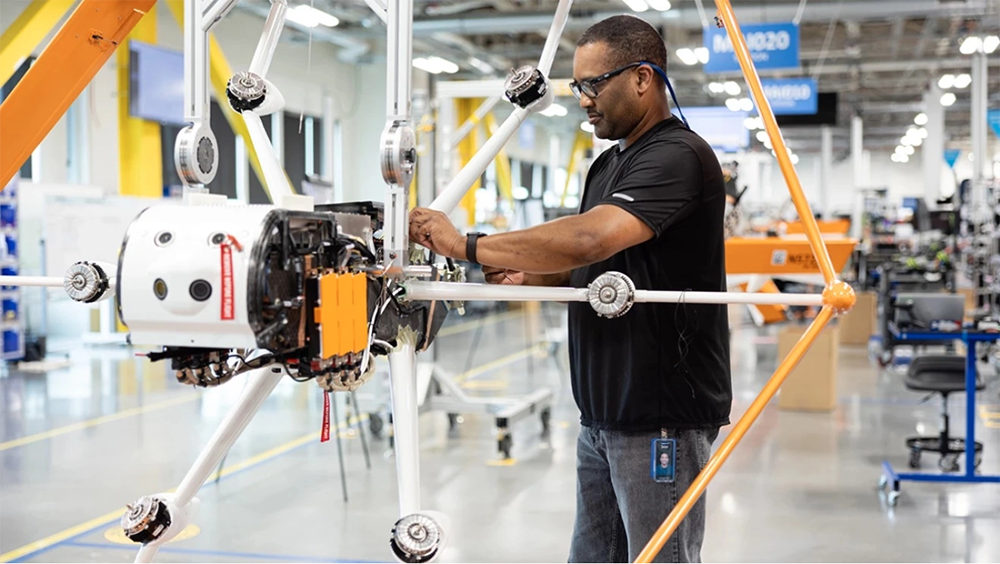
87 %…
…of U.S. households have some sort of connected streaming device and more than 71 percent have a smart TV, according to a report from Leichtman Research Group.
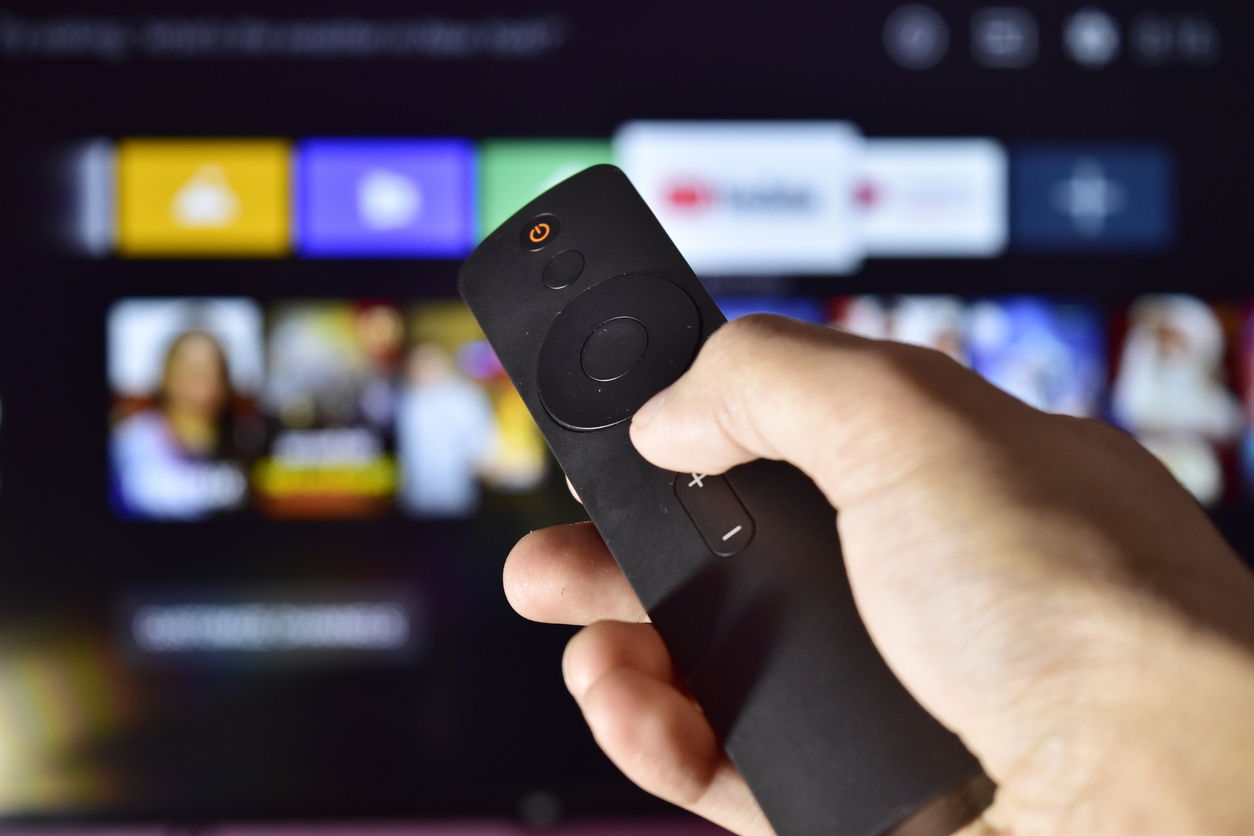
155 mph…
…is the top speed of the VoloConnect drone taxi, which completed its first test flight in May. Volocopter plans to roll out the groundbreaking service starting in 2026.

$1 Trillion…
…is lost annually across the global economy as a result of decreased workplace productivity due to widespread mental health issues, according to estimates from the World Health Organization.

DEALERSCOPE PODCAST
Welcome to the Dealerscope Podcast – Your Source for all B2B trends in Retail, Tech and Biz!
In the high-strung consumer electronics retail business, it can be hard to take a moment to step back and breathe. The Dealerscope Podcast gives CE retail leaders the chance to kick back, relax and talk shop in a casual setting.
Get Dealerscope
and Connected Design
delivered to your doorstep
or to your email.
Click on the links below to update how and where you receive your issues! Change your mailing address or request a change from print to digital, subscribe to our newsletters, or just head to our websites.
CONNECTED DESIGN
Subscribe to Print Magazine
Renew Your Subscription
Subscribe to Newsletters

OFFICES
100 S. Juniper St., 3rd Floor
Philadelphia, PA 19109
132 West 31st Street, 9th Floor
New York, NY 10001
EDITOR IN CHIEF
Erinn Loucks
eloucks@ctlab.media
SENIOR MANAGING EDITOR
Sam Hitt
samhitt@ctlab.media
CHIEF SOCIAL MEDIA AND WEB EDITOR
Brenda Thelusca
bthelusca@ctlab.media
ASSOCIATE EDITOR
Alec Paige
apaige@ctlab.media
EDITORIAL INTERNS
Leontine Dixon
Miriam Dixon
CONTRIBUTORS
Randy Blanchard
Kristen Hanich
Elizabeth Parks
John R. Quain
Egon Sanders
Scott Wagner
CREATIVE
Astrid von Krenski
(940) 727 8595
avkrenski@ctlab.media
GROUP PUBLISHER
Tony Monteleone
(718) 216-2046
tmonteleone@ctlab.media
OPERATIONS MANAGER
Vicki Manucci
vmanucci@ctlab.media
CIRCULATION & DISTRIBUTION
Carrianne Ramsey
cramsey@ctlab.media
ACCOUNTING/HR MANAGER
Catalina Gonzalez
cgonzalez@ctlab.media
CHIEF OPERATING OFFICER
Alice Schmalzl
(940) 612-9581
aschmalzl@ctlab.media
OFFICES
100 S. Juniper St., 3rd Floor
Philadelphia, PA 19109
132 West 31st Street, 9th Floor
New York, NY 10001
dealerscope.com
Publisher of Dealerscope, and Connected Design
Copyright ©2022 CT Lab Global Media LLC
CT Lab Global Media is a diversified publisher of business and professional magazines. This publication is provided with the express understanding and agreement that the information and data within it will be solely for internal use and will not be used for the creation or updating of mailing lists for sale or distribution to third parties. Printed in the U.S.A.





